All-New Honda HR-V RS First Impressions
Our comprehensive experience report on the all-new Honda HR-V RS e:HEV Thai specification.
The Honda HR-V is a very important car for the company. It was one of the first on the scene to find a nice ‘crossover’ middle ground between the B-segment and C-segment sedans most traditional buyers would go for. It was introduced to the Malaysian market in February 2015 and was partly responsible in dethroning UMW Toyota in overall passenger car sales. Since then, Toyota has picked itself up again with the larger Corolla Cross. What’s more, Mazda also found a premium niche in the space with its new CX-30. Well, Honda has decided to split the difference with the all-new HR-V. We headed to Phuket, Thailand to experience the car first hand. It should be available to book in Malaysia by the time you read this, so we’ll leave a link here to the local microsite. What’s worth noting is that Malaysia will get remote engine start for our model, which is absent on the Thai version. In the meanwhile, take a video tour of the car we drove below or scroll through the text for all the details:
New Honda HR-V RS Look
The new HR-V was designed from the ground up with the ‘Amp Up Your Life’ grand concept and is clearly more skewed towards a lifestyle/premium centric buyer than a small family car buyer. It trades the larger boot and flatter rear bench seats of the outgoing HR-V for a more purposeful interior. On the outside, Honda has designed a more upright and upmarket car. LED sequential turn signals, two-tone paintwork, a mix of glossy black and chrome accents, as well as a smoked LED taillight strip give the new HR-V a very different outlook.
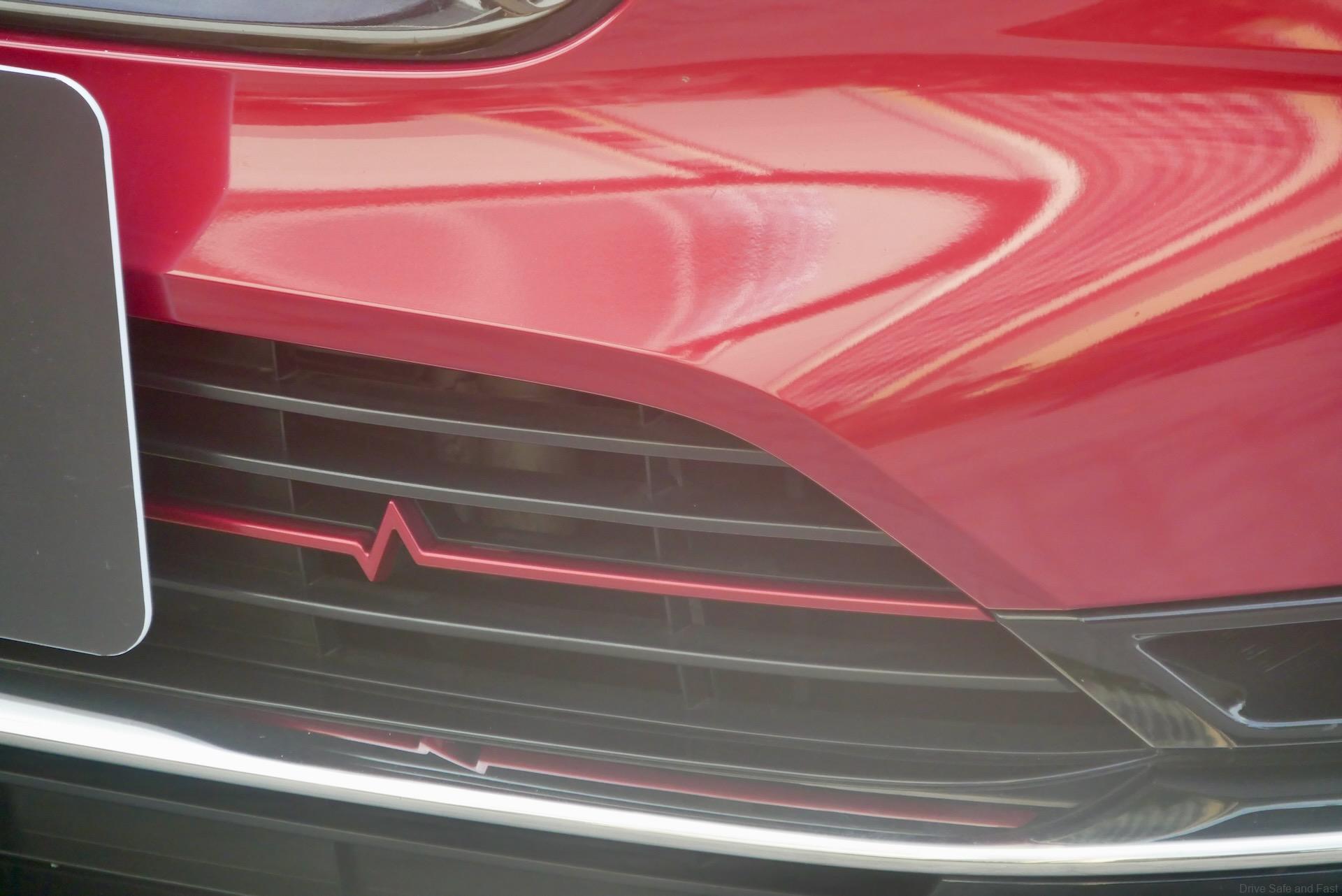
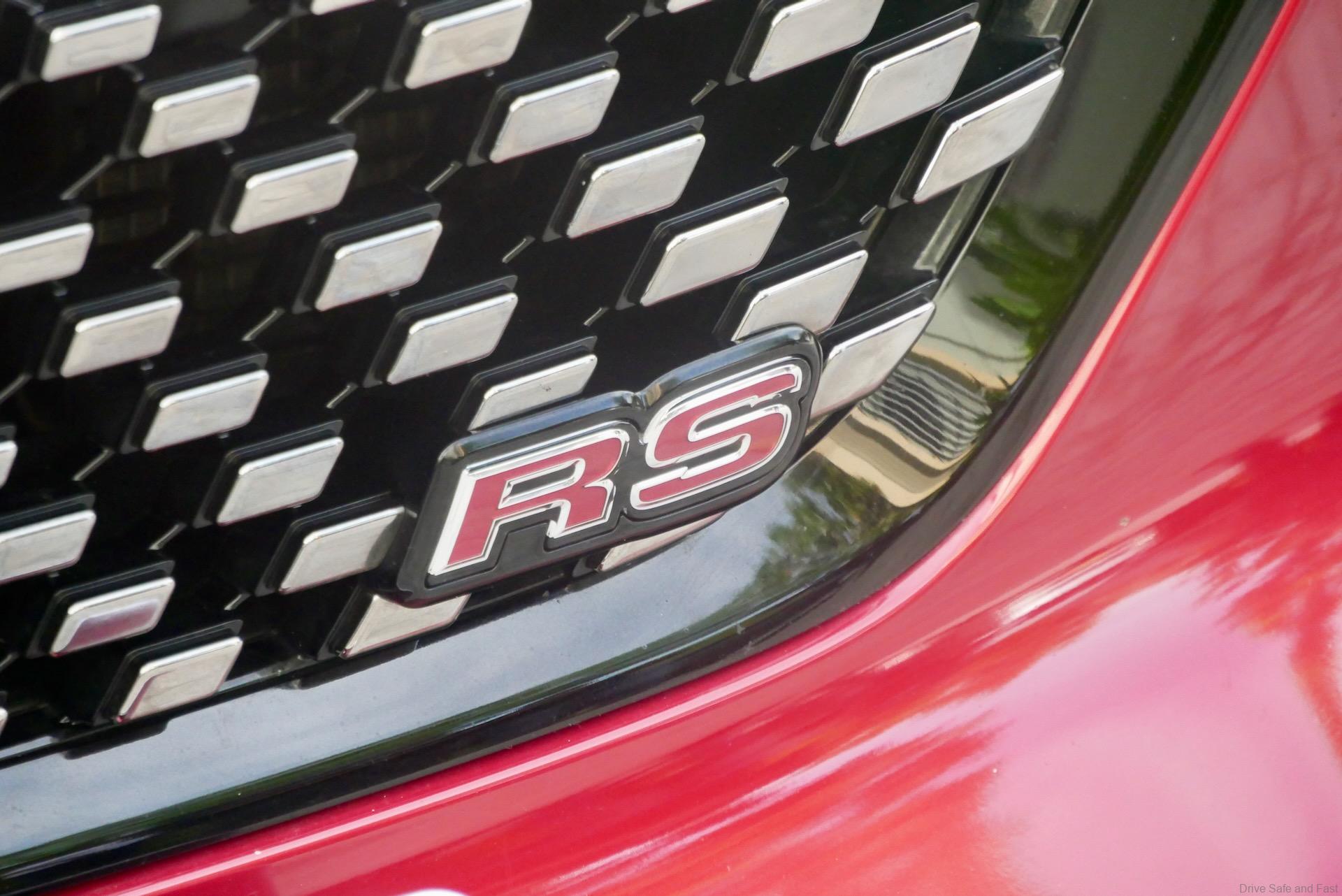
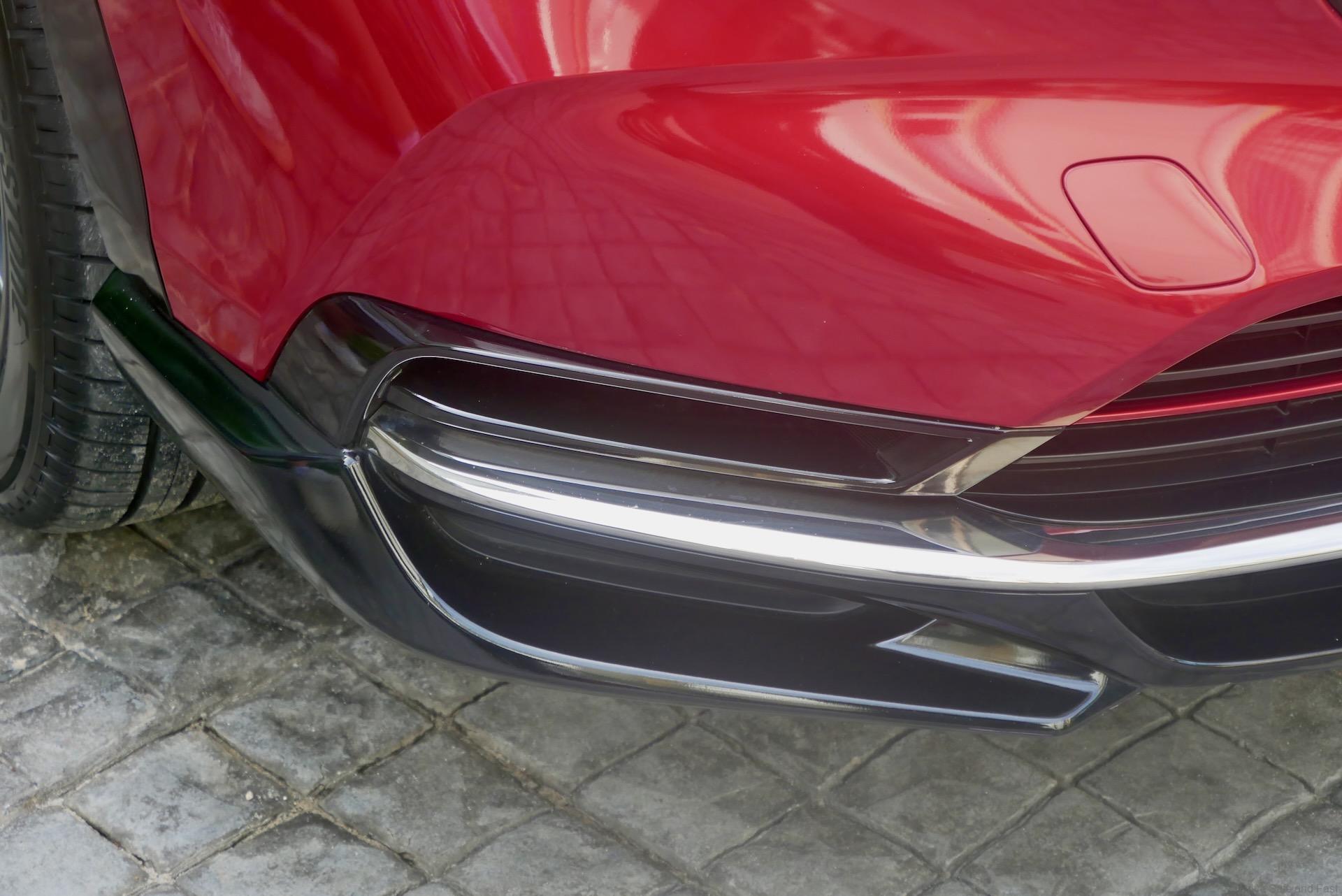
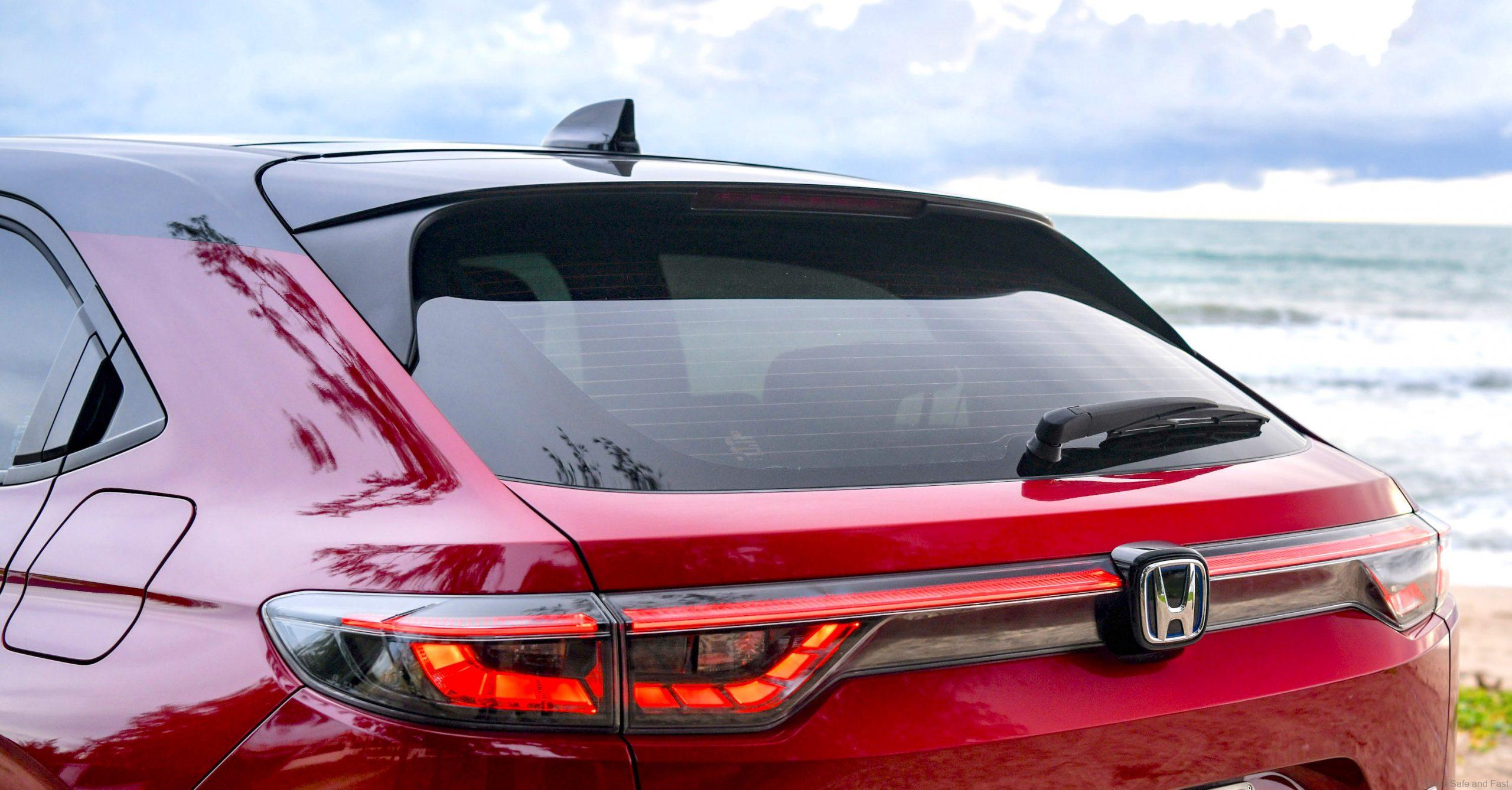
The RS model comes with specific design cues, including the aforementioned glossy black accent pieces (mostly cladding on the body). It also has a unique RS grille with a nice almost 3D effect that really comes more in photos than in the metal. They’ve even tried to inject a little personality in the new HR-V with a little graphic cardiogram of a heartbeat in the lower grille area.
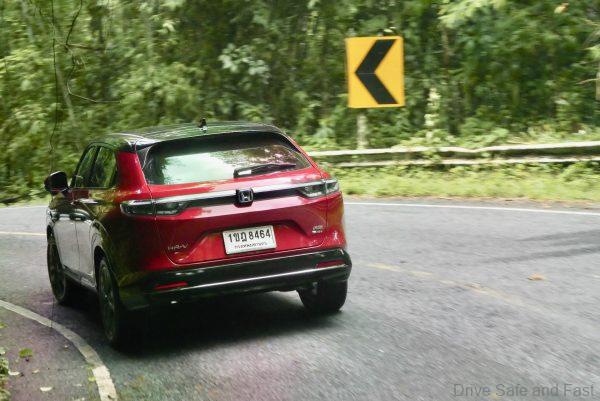
But it’s not really the details that draw you in – it’s the overall silhouette that really sells the look of the new HR-V. This is completely unlike anything we’ve seen from Honda in the past. The roofline now rakes in sharply at the C-pillar for that coupé SUV look. The metalwork on the doors show a break away from Honda tradition. They’ve chosen flatter, more subtle surfacing with a sharply creased shoulder line linking the taillights to the gap in the clamshell hood.
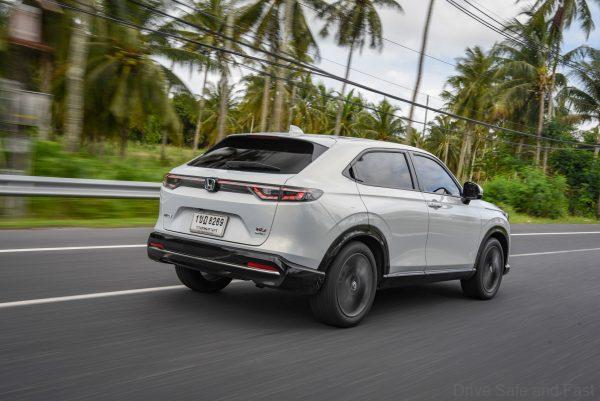
From the rear and in white it could be mistaken for something quite easily 3 times what it actually costs. It’s impressive work from Honda’s design team. The only genetic link to its predecessor is the hidden door handle for the rear ports. Running with the new upmarket theme, Honda has fitted this HR-V with 18″ wheels.
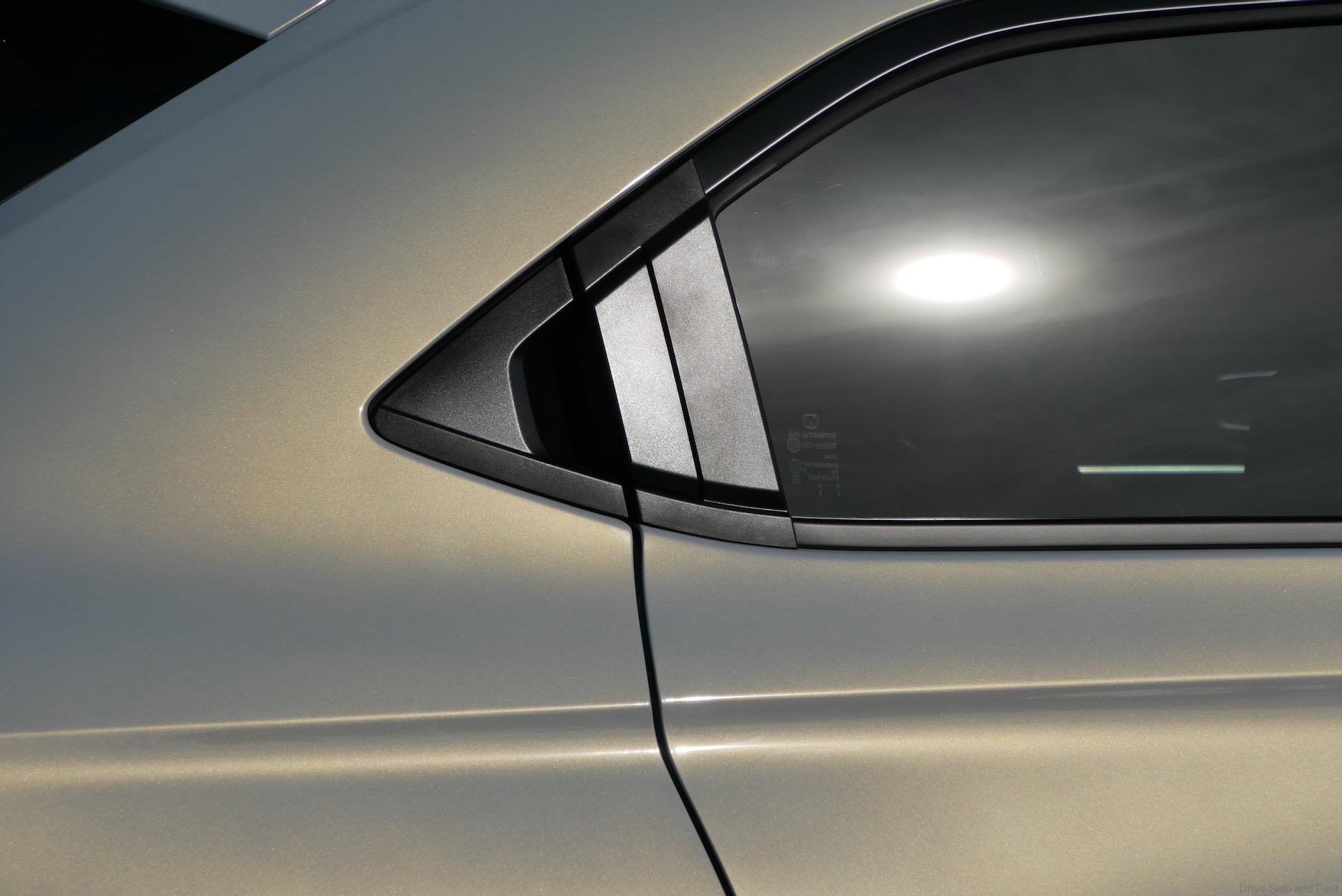
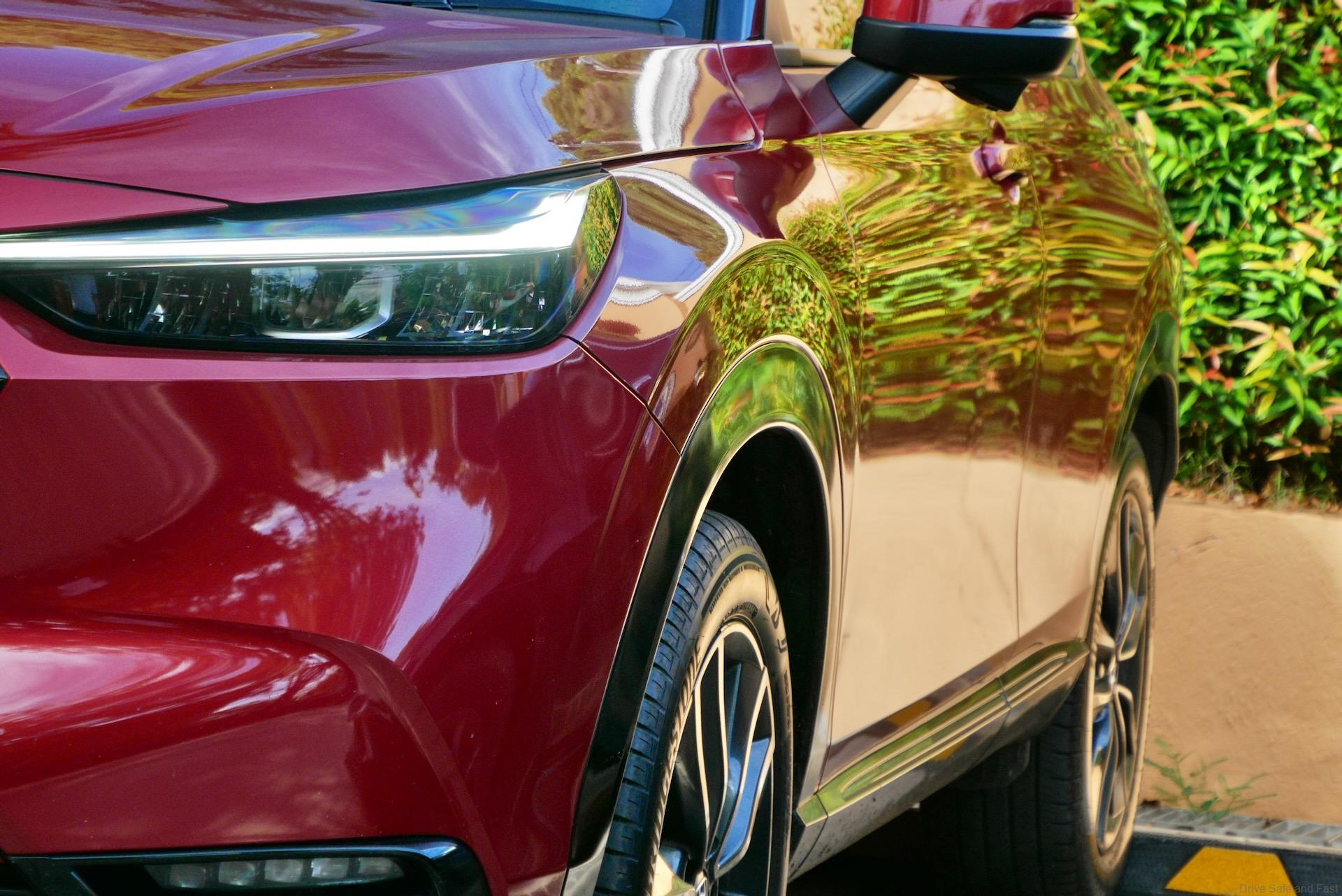
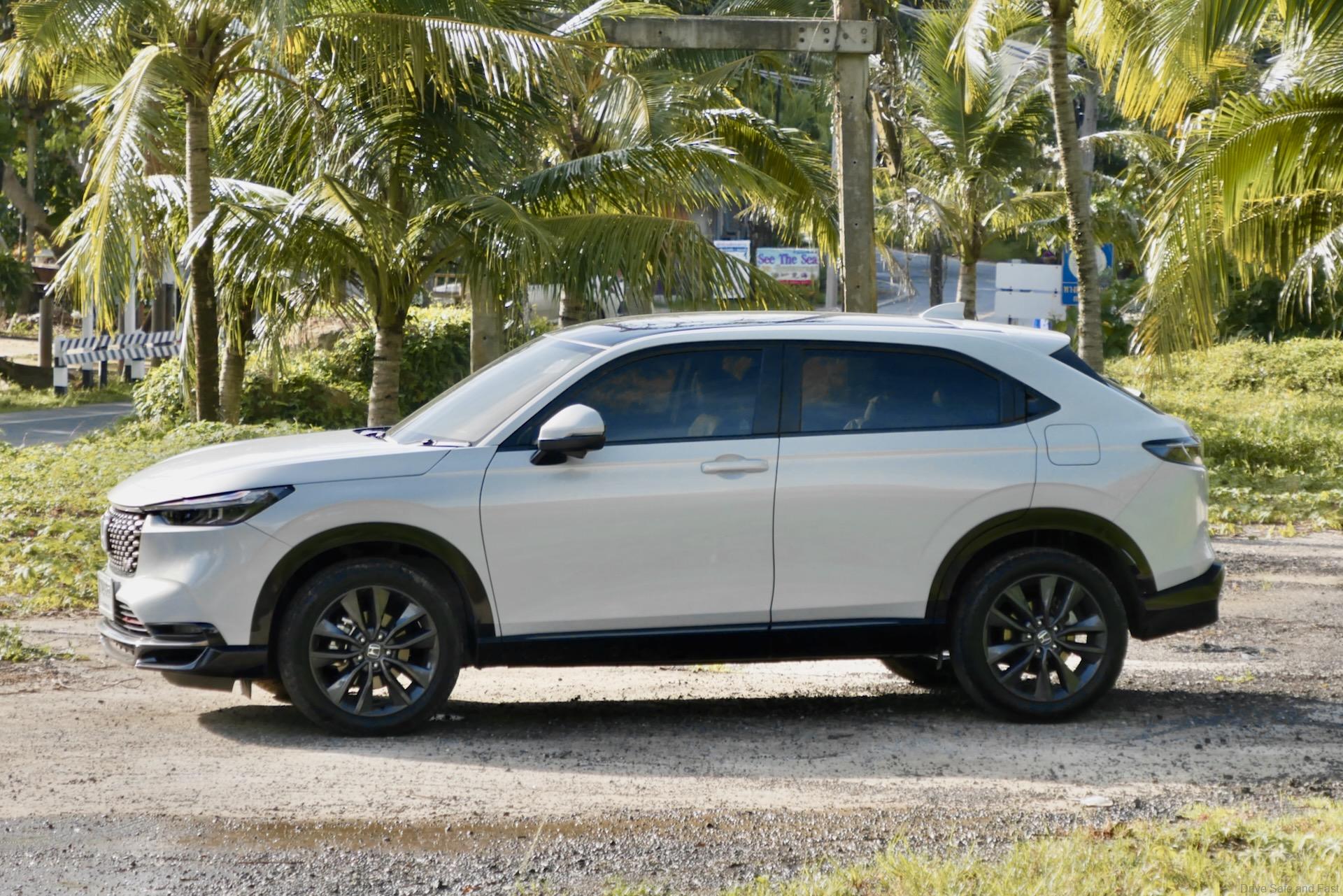
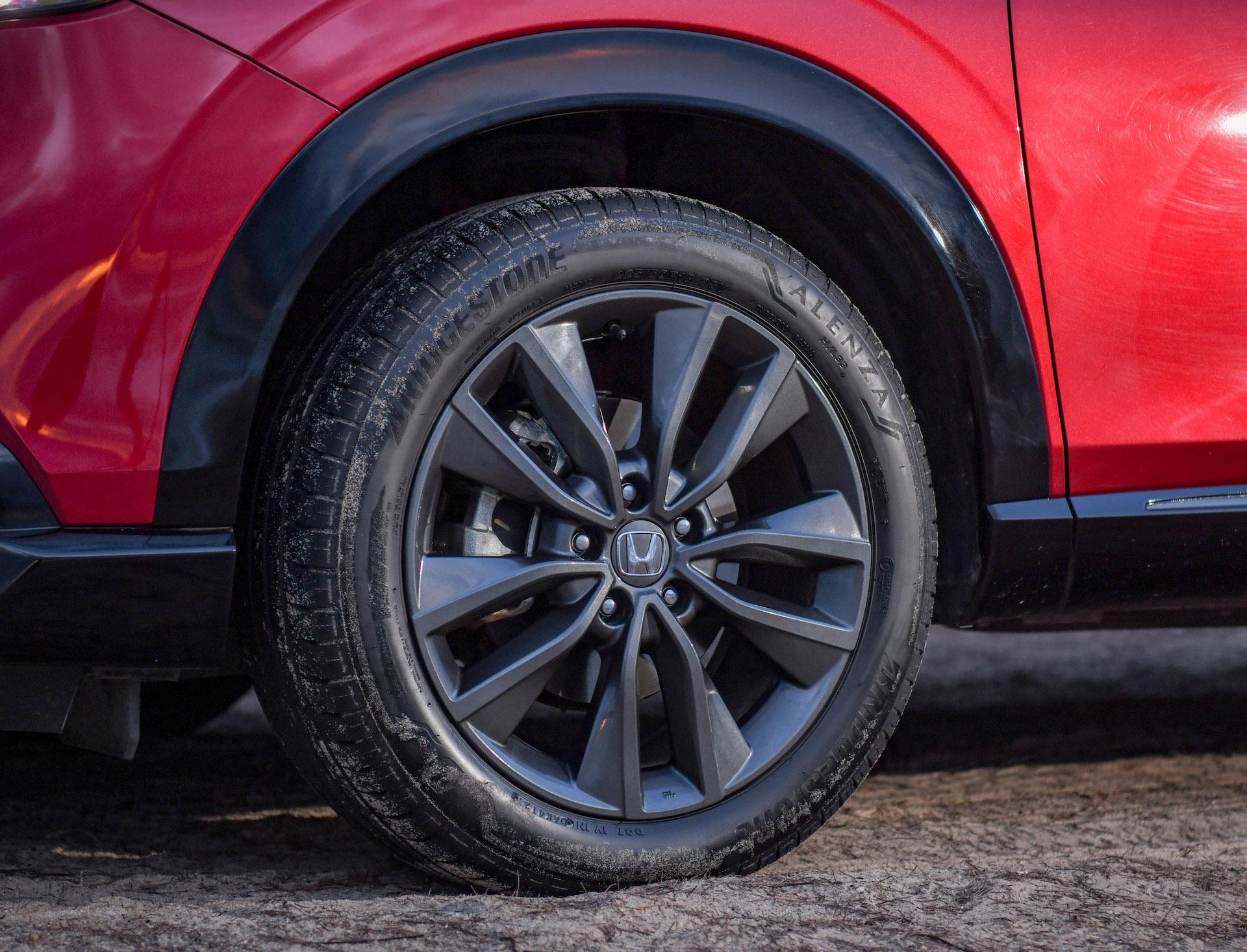
New Honda HR-V RS e:HEV Driving Character
In Thailand, the new HR-V is presented only in the ‘RS’ grade and only with the e:HEV powertrain. This powertrain is essentially the same as what we find in our local City RS e:HEV (and its Hatchback counterpart). If you want a more elaborate exploration of how e:HEV works, there’s an explanation buried in this article.

The HR-V e:HEV system has an electric traction motor capable of 136PS and 253Nm of torque. It also has a 1.5L Atkinson cycle i-VTEC engine that serves partly as a generator and partly to drive the wheels when cruising or under very hard acceleration. An e-CVT controls all the action that goes to the front wheels.
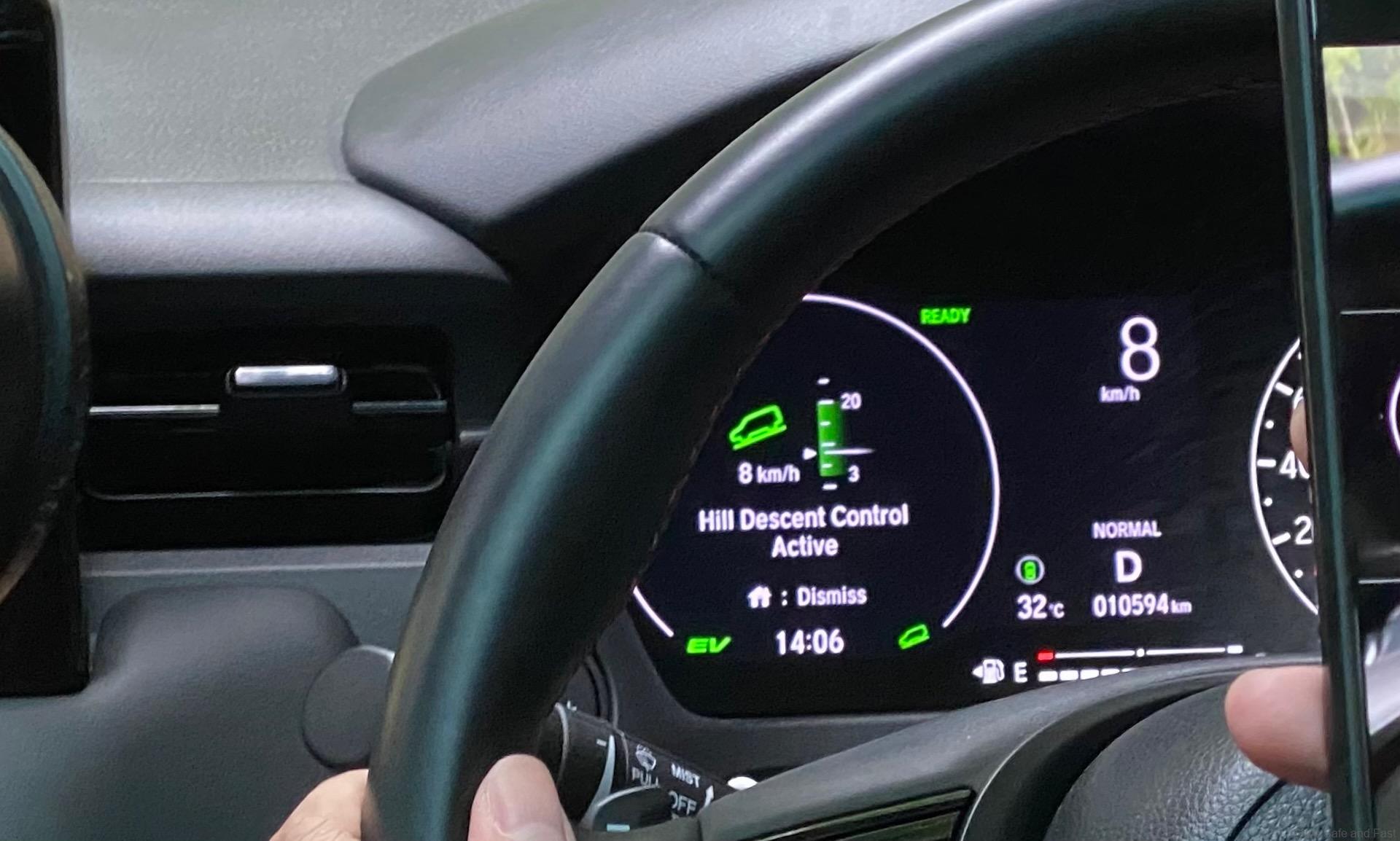
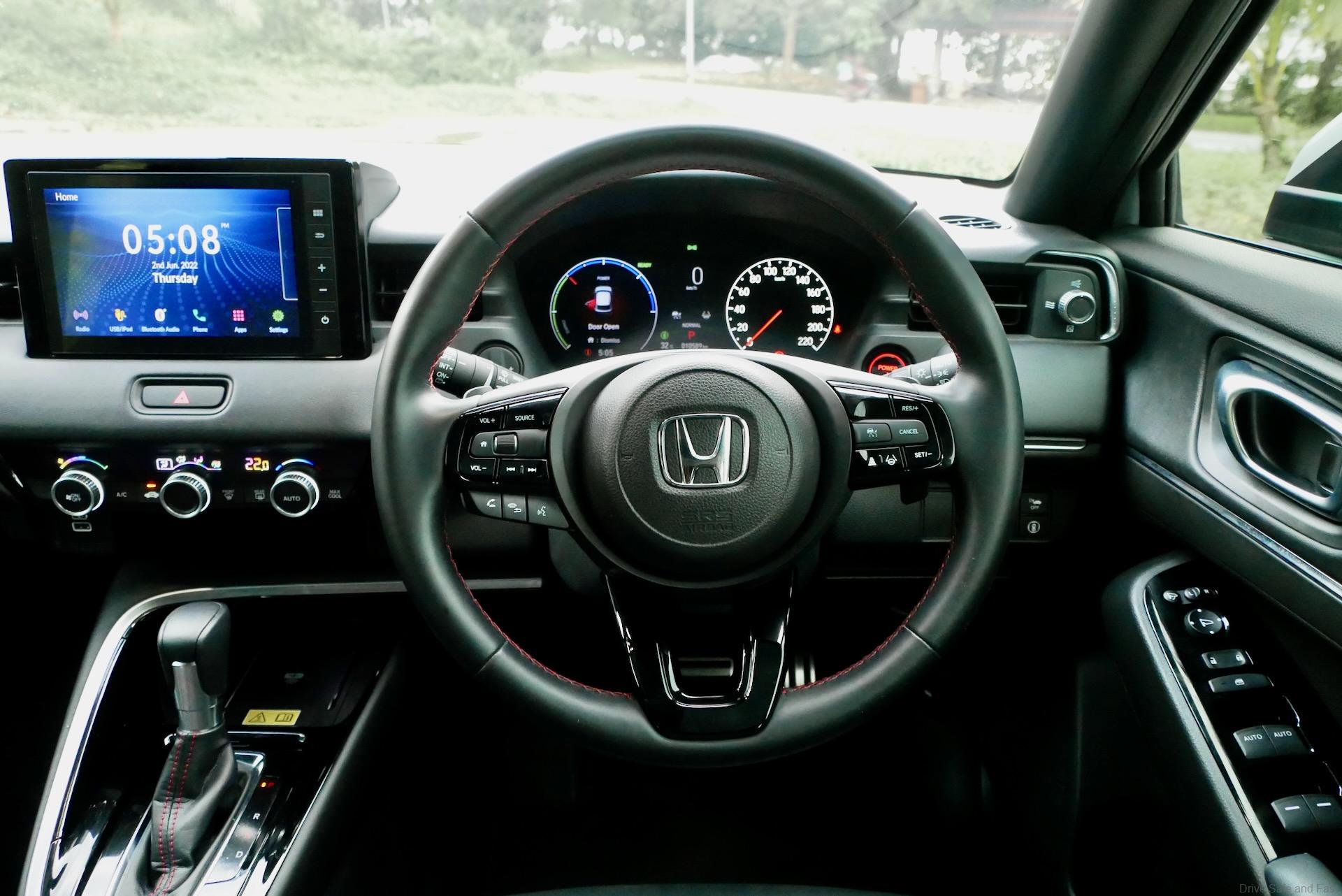
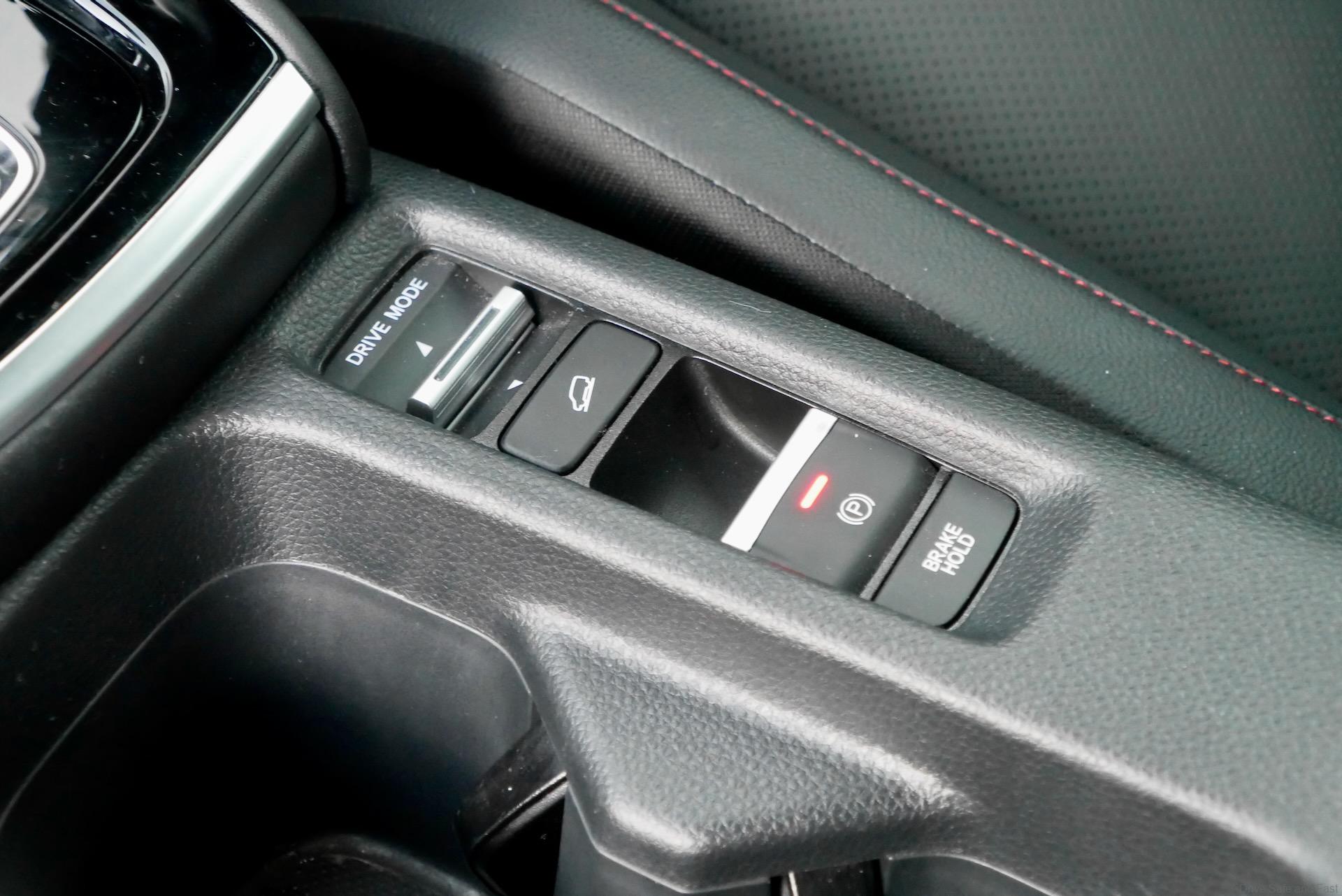
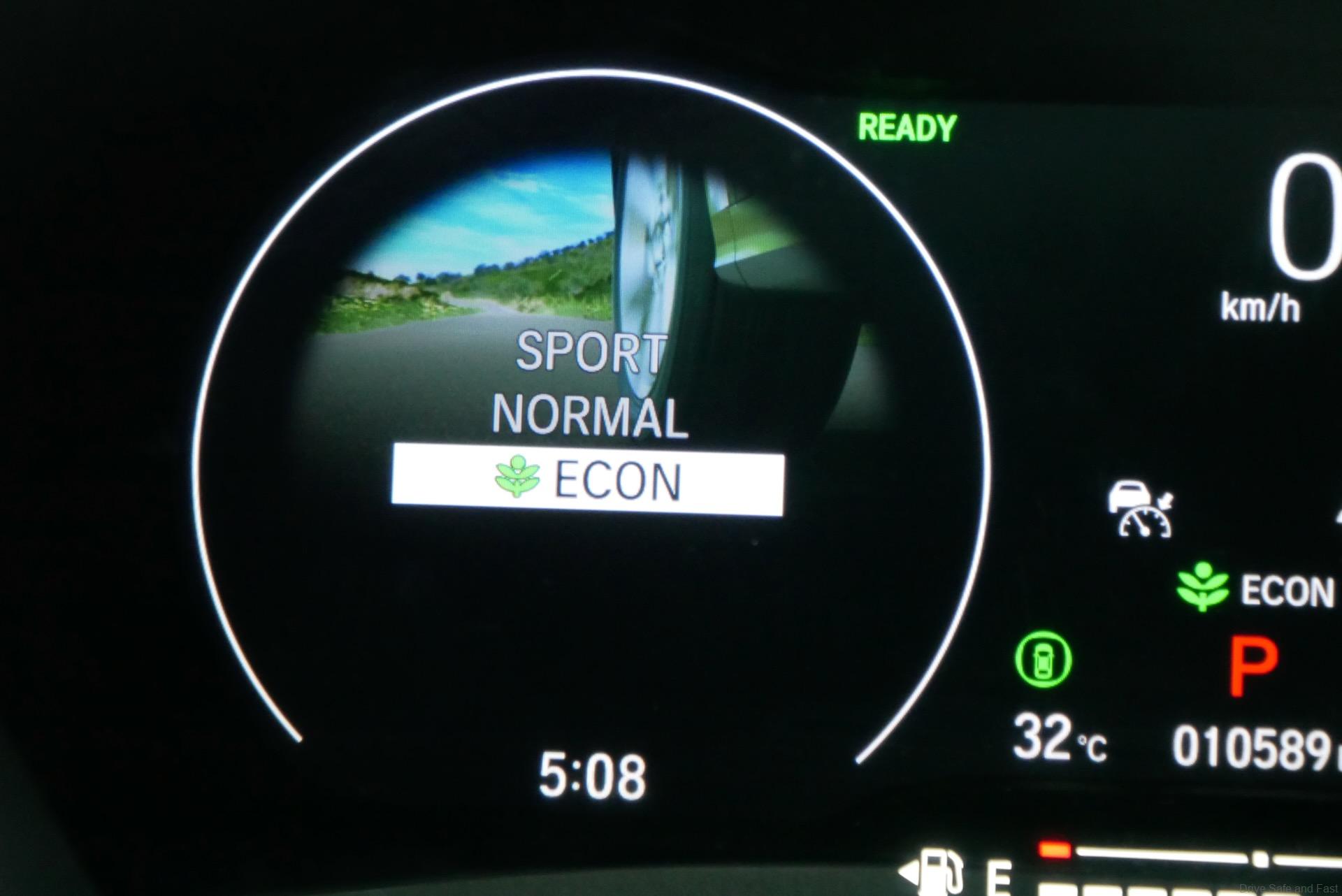
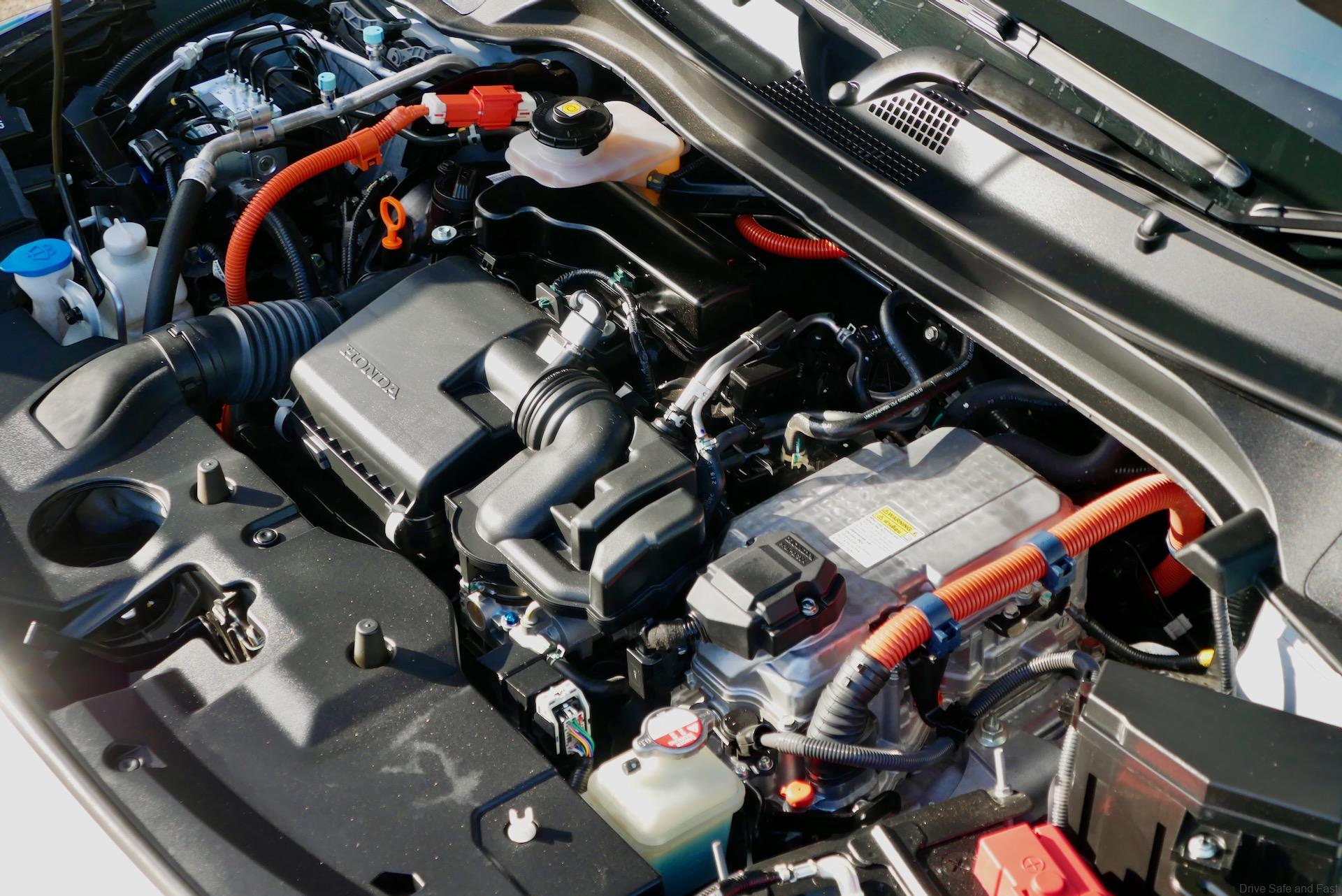
Brake regeneration levels can be controlled with the two paddle shifters. The e:HEV setup here has more output on paper, but the difference between the HR-V and City models with this powertrain should be negligible. In other markets, this new HR-V can also come with a naturally aspirated 1.5L engine (like the basic City models) or with a turbocharged 1.5L (like the Civic). Over the course of its lifespan, the outgoing HR-V was available here with either a 1.8L petrol or a 1.5L hybrid (an older i-DCD system), and there was an RS grade for the petrol model.
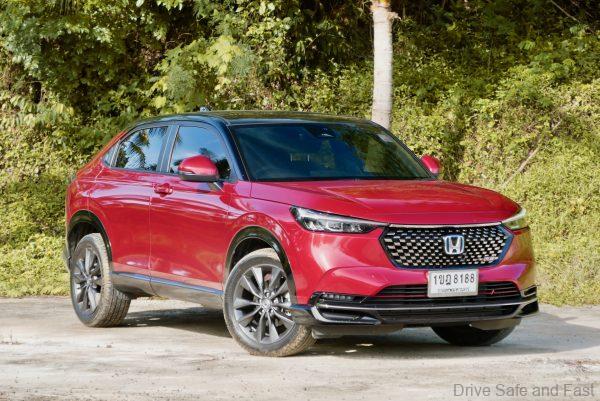
Driving behaviour in the new HR-V is sophisticated and composed. The rear suspension has been tuned to ignore the weight added by the IPU in the rear of this e:HEV model. It’s a lot like the City Hatchback and Sedan in the way it rides over surfaces and corners. The only caveat being a little more rebound in the rear over harsher bumps.
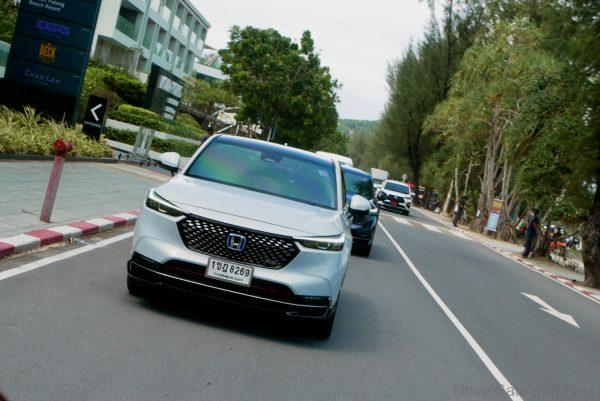
Overall, it’s a major improvement over the last vehicle. It’s perhaps quieter too, though we couldn’t quite do a side-by-side comparison between the two. Steering feel is perhaps this generation of Honda’s biggest boast. It was impressive in the City and spot on in the Civic. In the HR-V, again they’ve nailed it. A strange introduction is Hill Descent Control. This is essentially a cruise control feature that limits the speed of the vehicle as it goes down a very steep surface. It’s standard on the North American HR-V, which also has all-wheel drive.
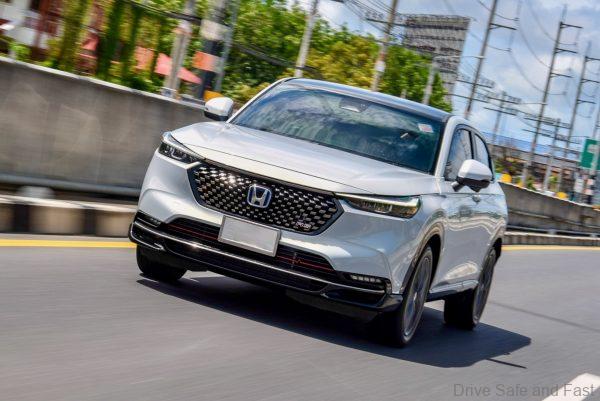
It’s a little out of place on this front-wheel drive HR-V to be honest. A final aspect to talk about is the Drive Mode Selector. This is missing on the City models but present on the Civic. In the HR-V, it’s here and we really like the implementation. The driver can cycle through Econ, Normal and Sport modes and there is a noticeable change in how quickly the car reacts to inputs.
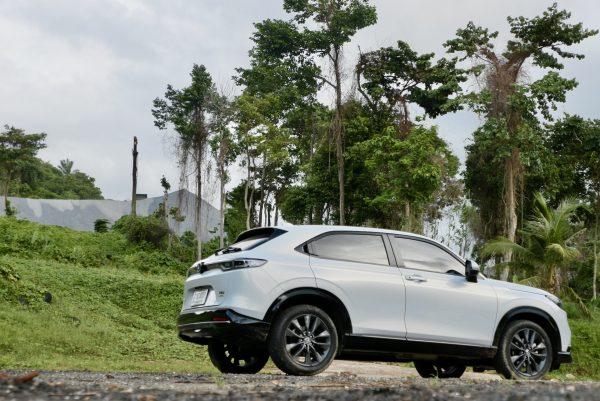
Rear Seat And Boot Layout
In the rear, as we’ve mentioned, the new HR-V isn’t quite as large as its predecessor. They’ve clearly looked at the Corolla Cross and decided it wouldn’t be worth playing that game. So instead they’ve decided to make the new HR-V specialise in carrying slightly less but doing the job much better. The rear seats are large enough for two of me, with adequate support for a long journey.
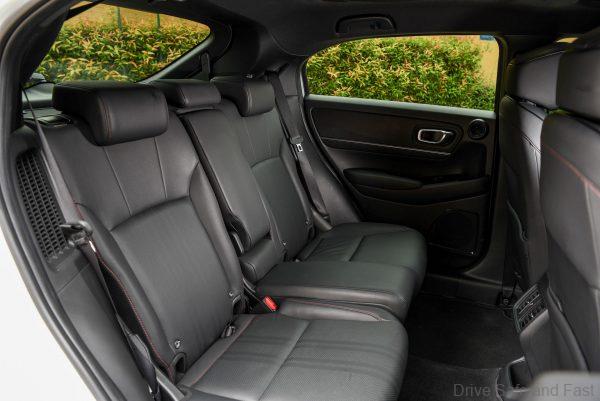
There are now two USB-A charging ports and rear vents for passenger convenience and comfort, a big upgrade from before. A nice little upmarket feature in the Thai spec HR-V is the fixed sunroofs for the front and rear passengers. The front glass features a sliding cover while the rear glass gets two separate and detachable framed cloth pieces to blot out the sun. A storage bag is supplied, but no dedicated storage area exists for these pieces, so the whole storage bag will have to be chucked in the boot. This version also comes with a black headliner material and two capacitive LED room lights at the centre of the car’s roll bar. The design of the rear door card has changed drastically this generation. There’s a smaller and shallower cupholder this time around but it is moved to a more accessible location. They’ve also included 2 speakers in these door cards. Seatback storage this time around includes a little felt-line pocket for smartphones – large enough even for an iPhone 11 Pro Max.
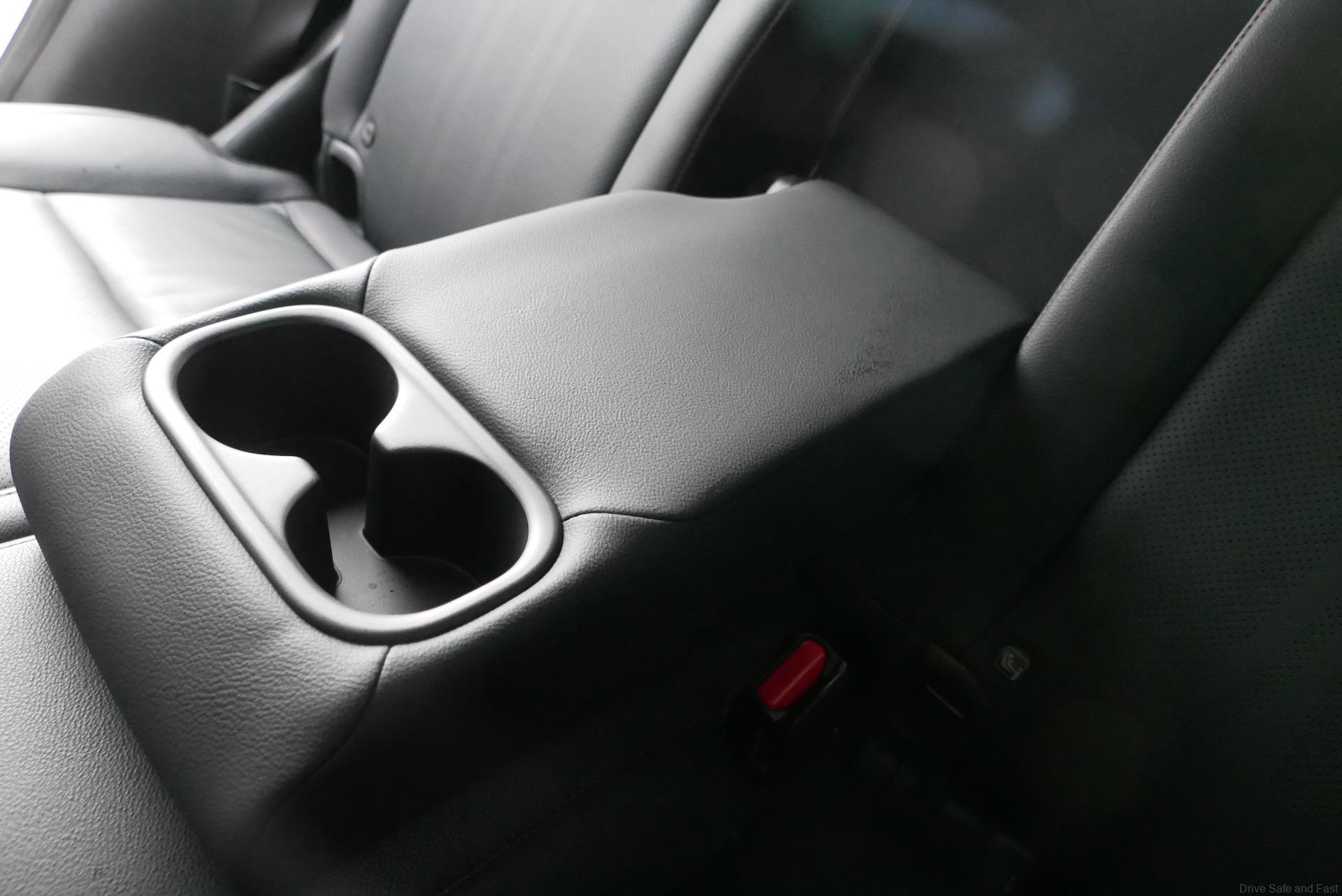
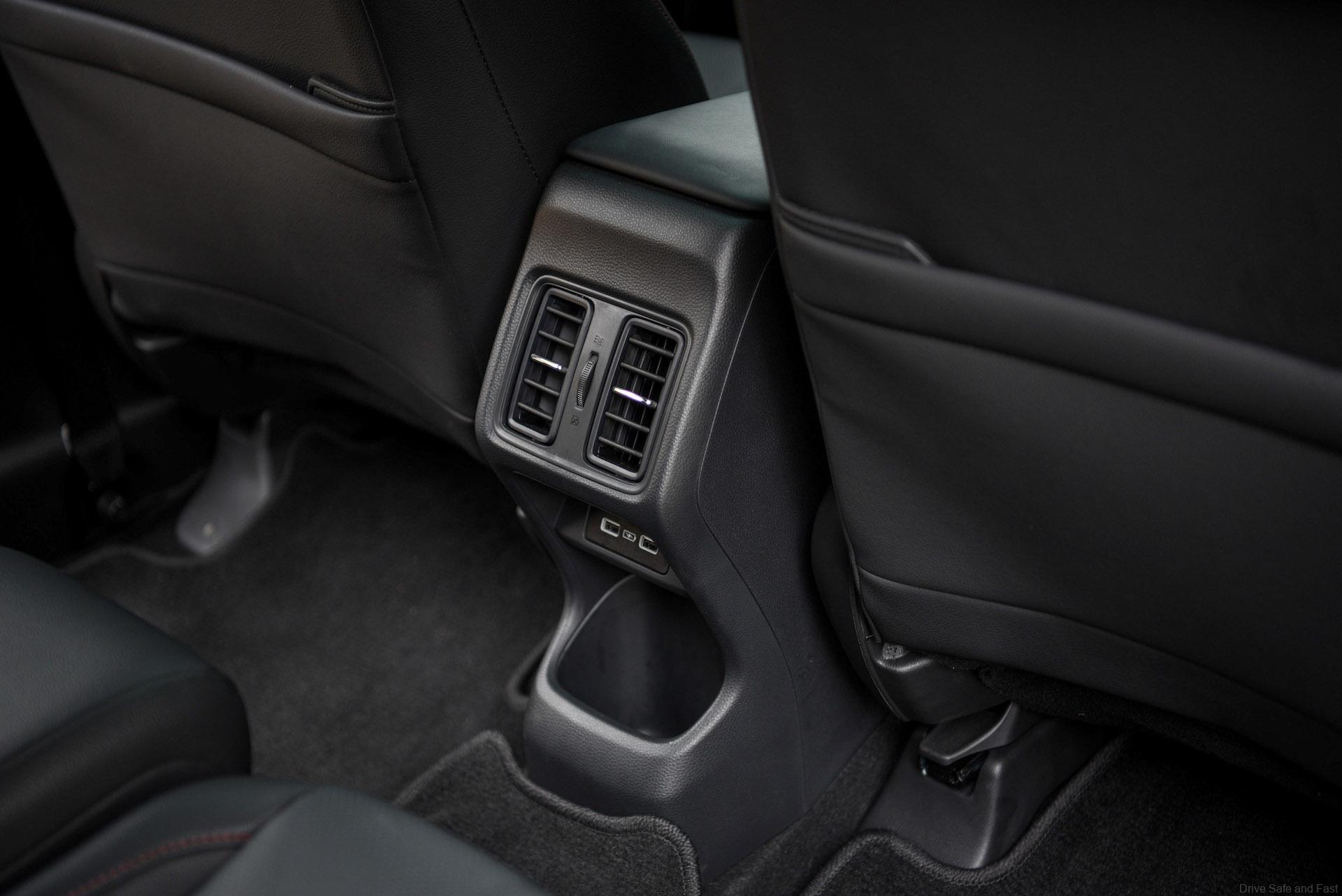
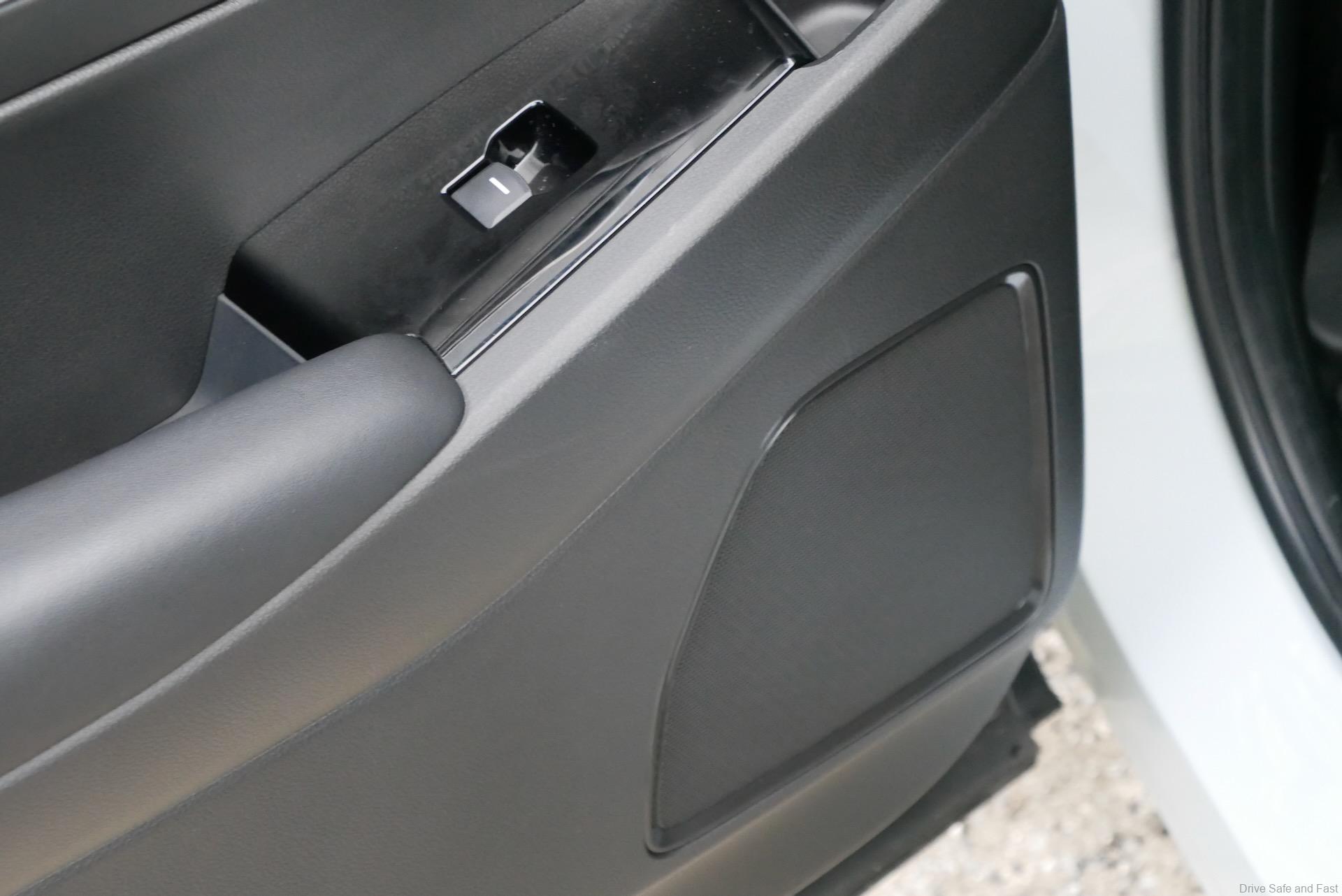
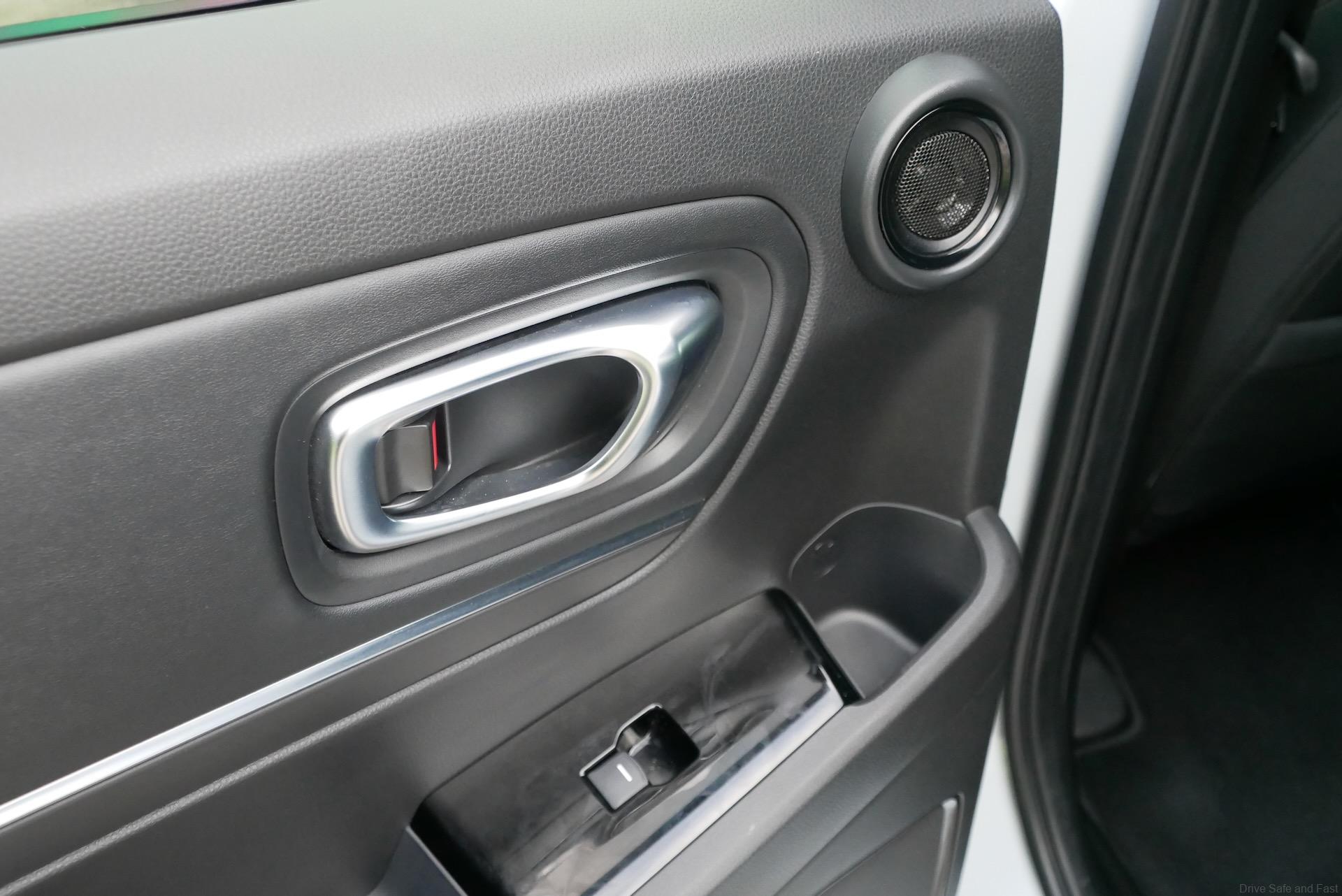
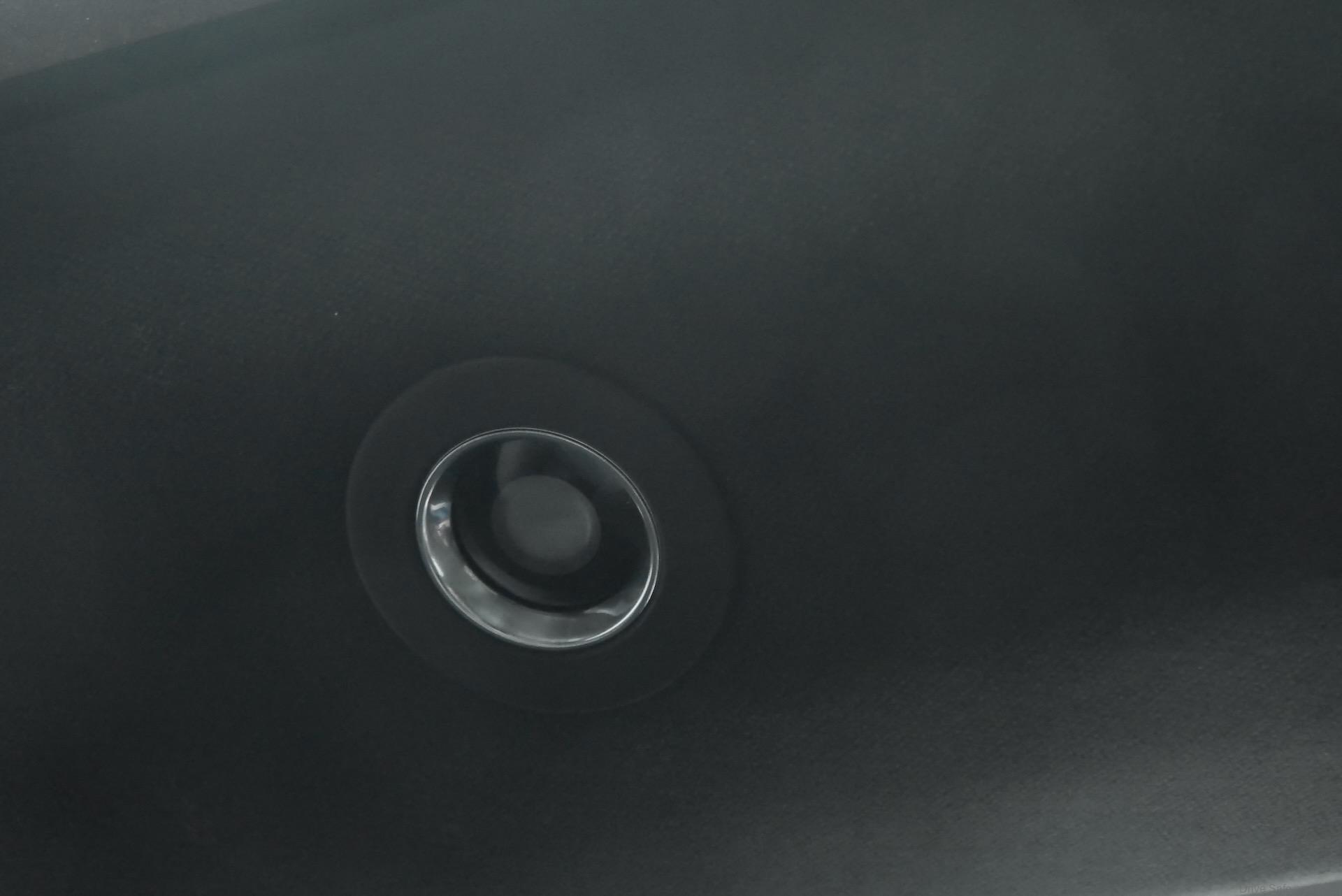
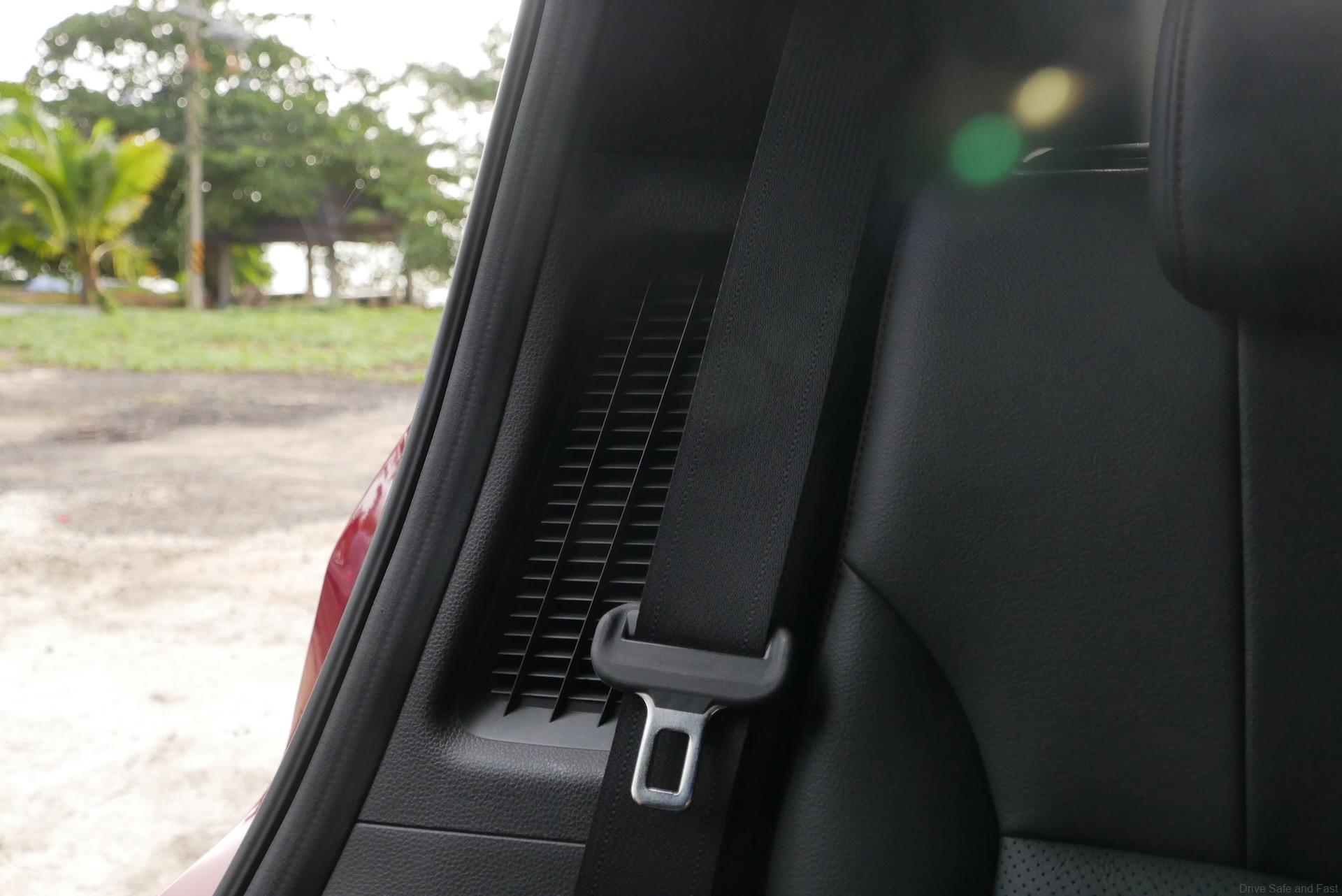
The boot is lit by two LED lights and though smaller than before, can still be expanded with the rear seats folded down and this time around the shape of the boot is a lot more boxy, making it easier to load. What’s more, the rear seats are still ‘Ultra seats’, meaning they can also be set with the bench sections tilted and locked up.
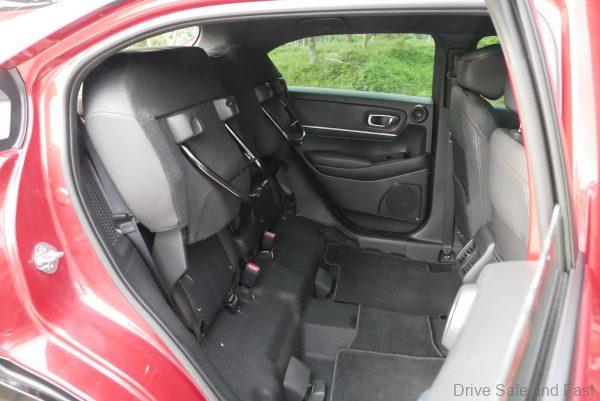
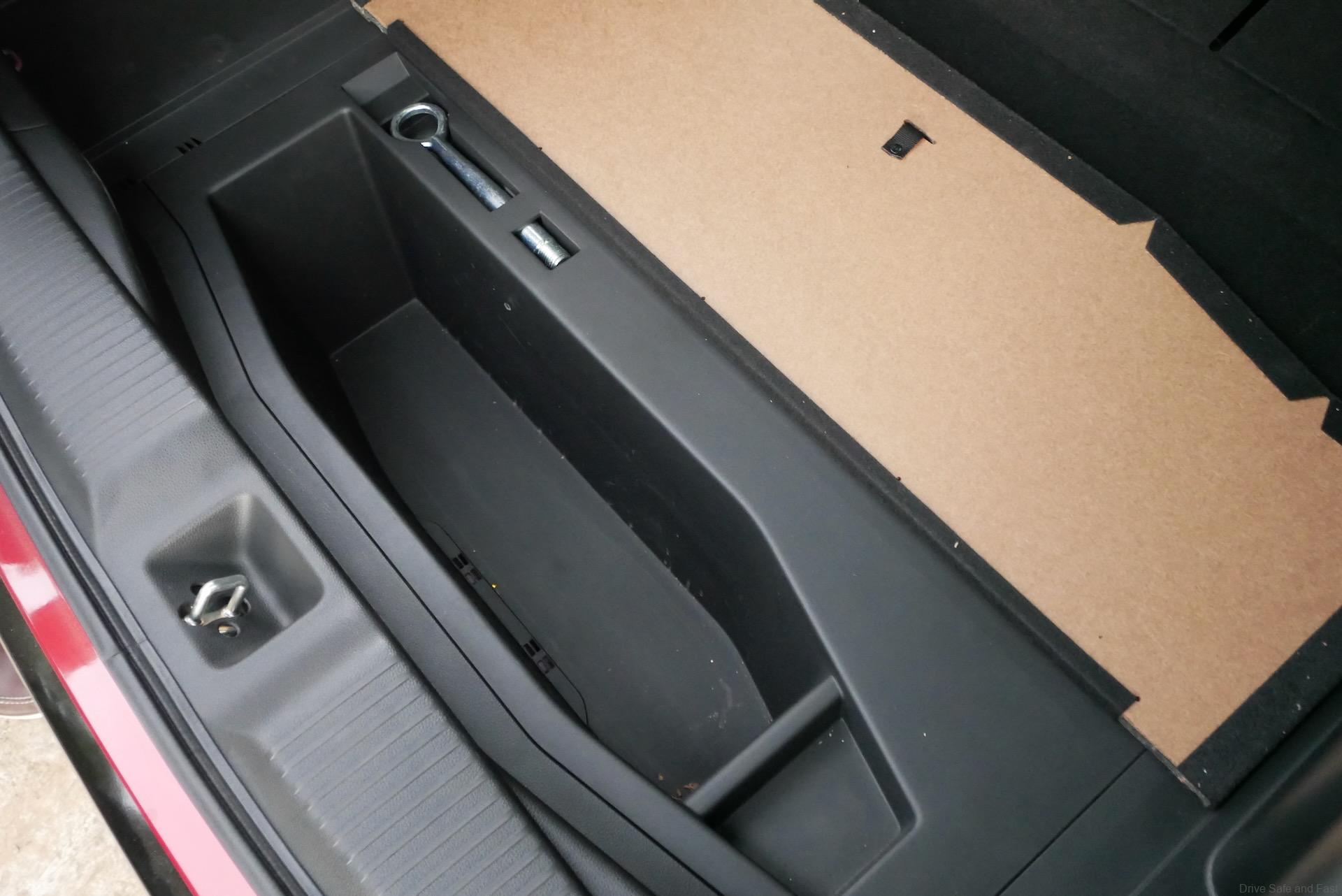
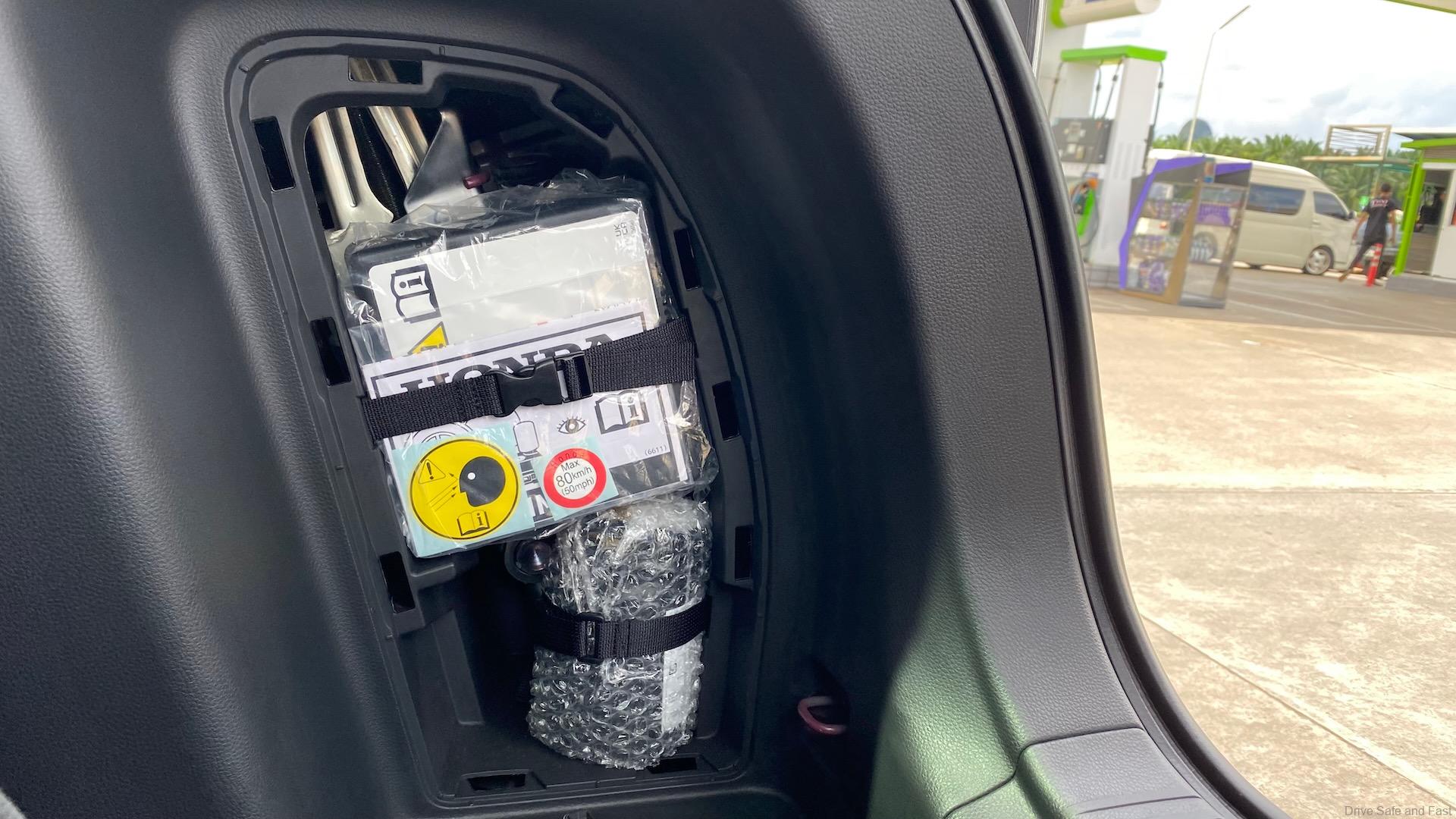
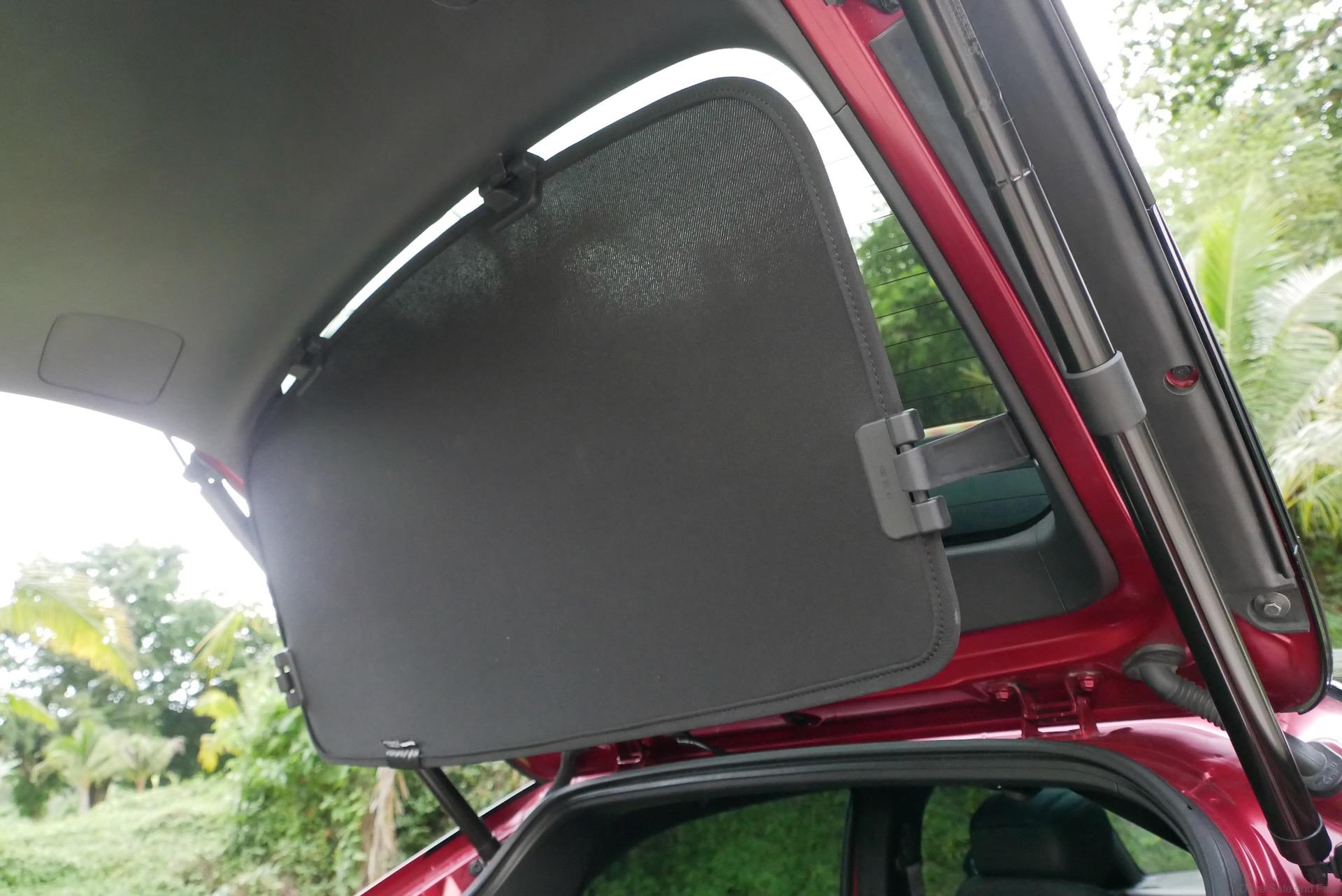
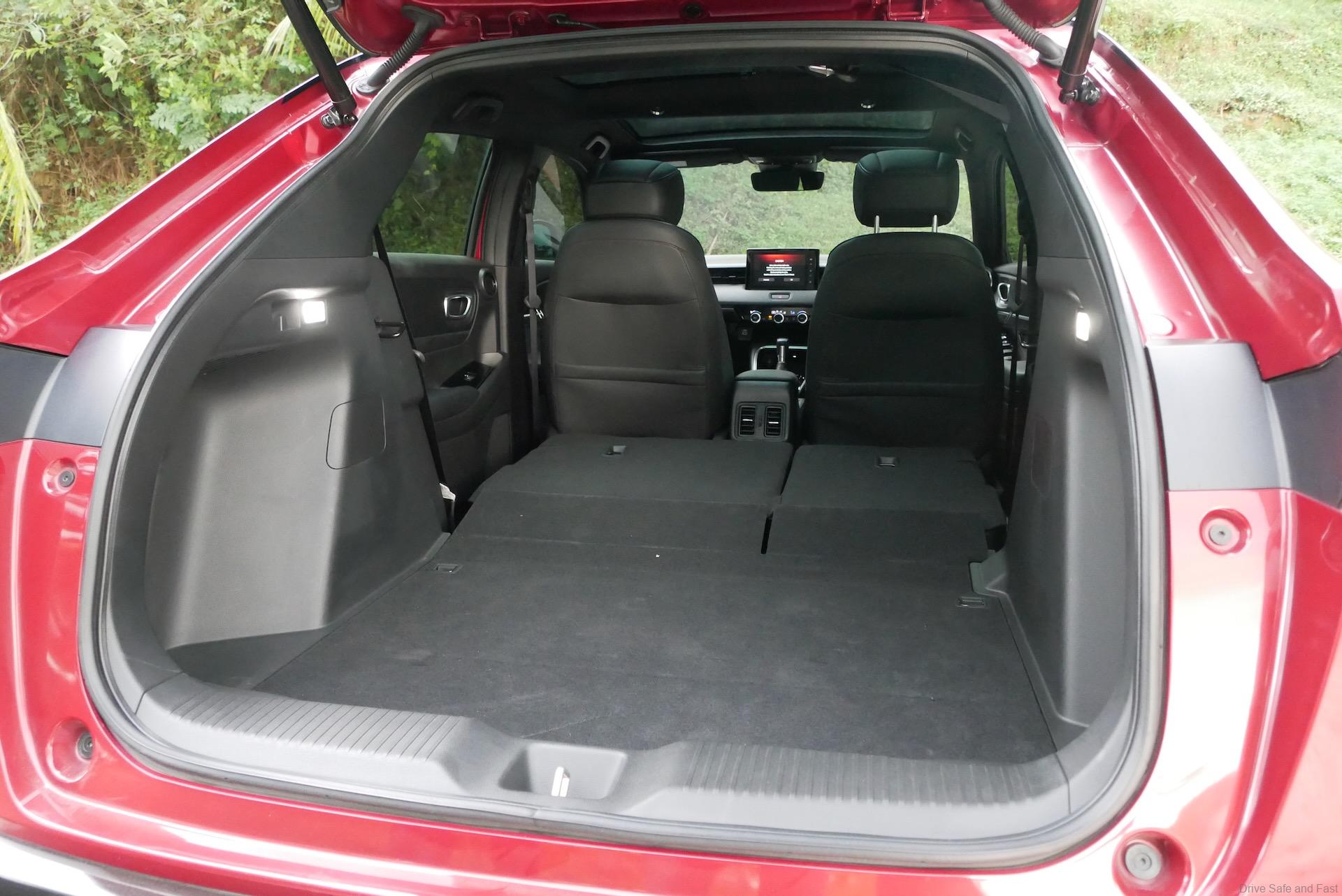
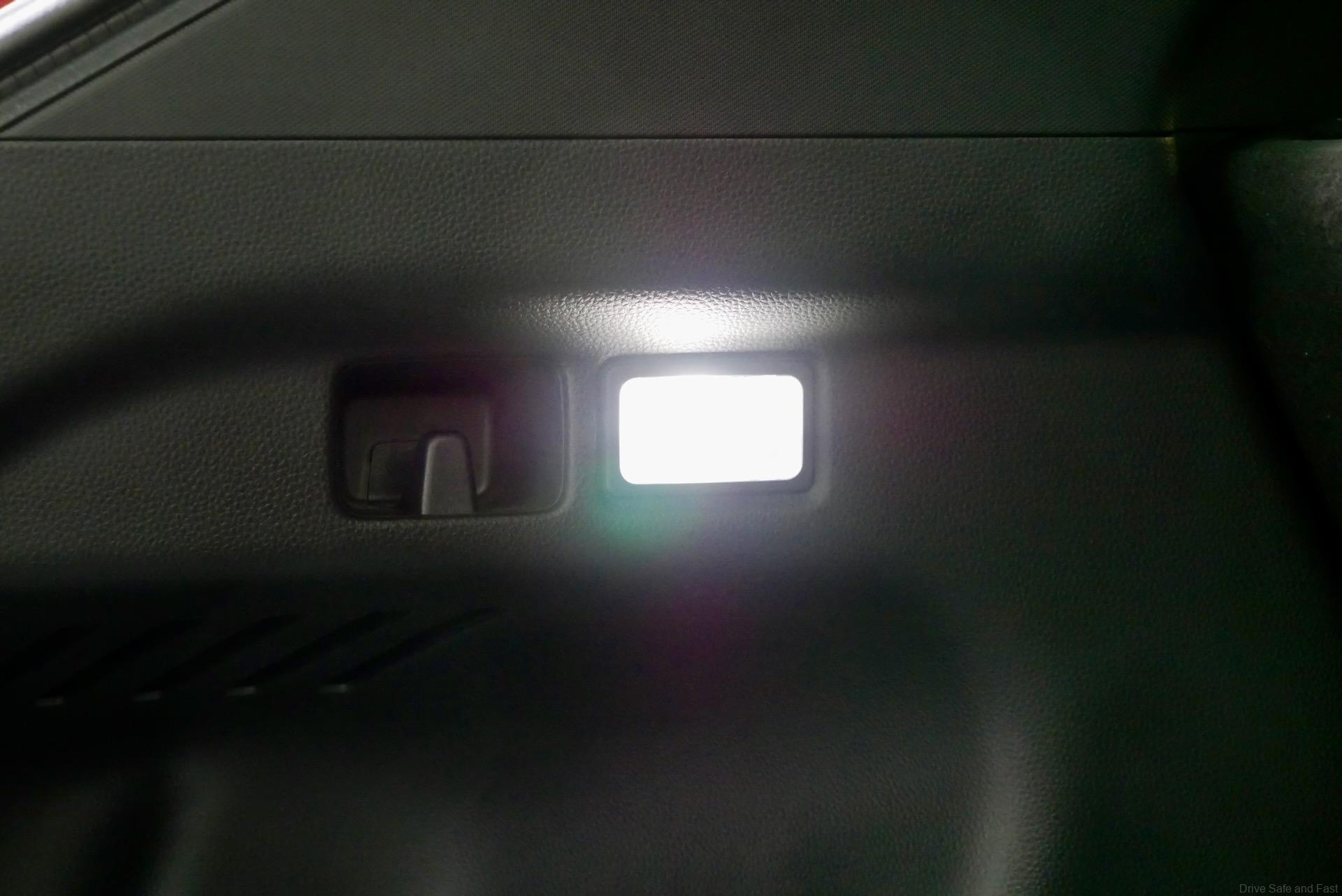
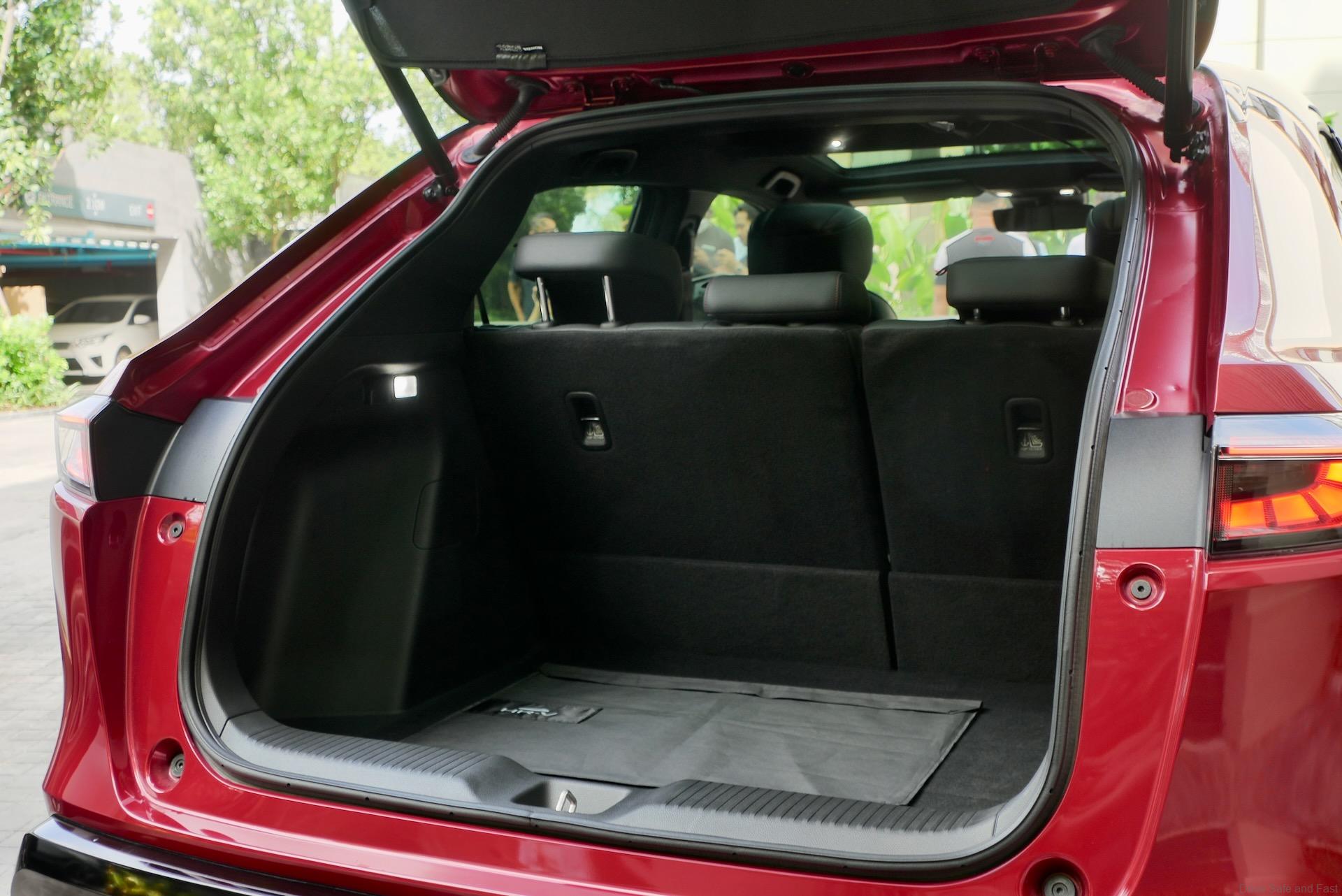
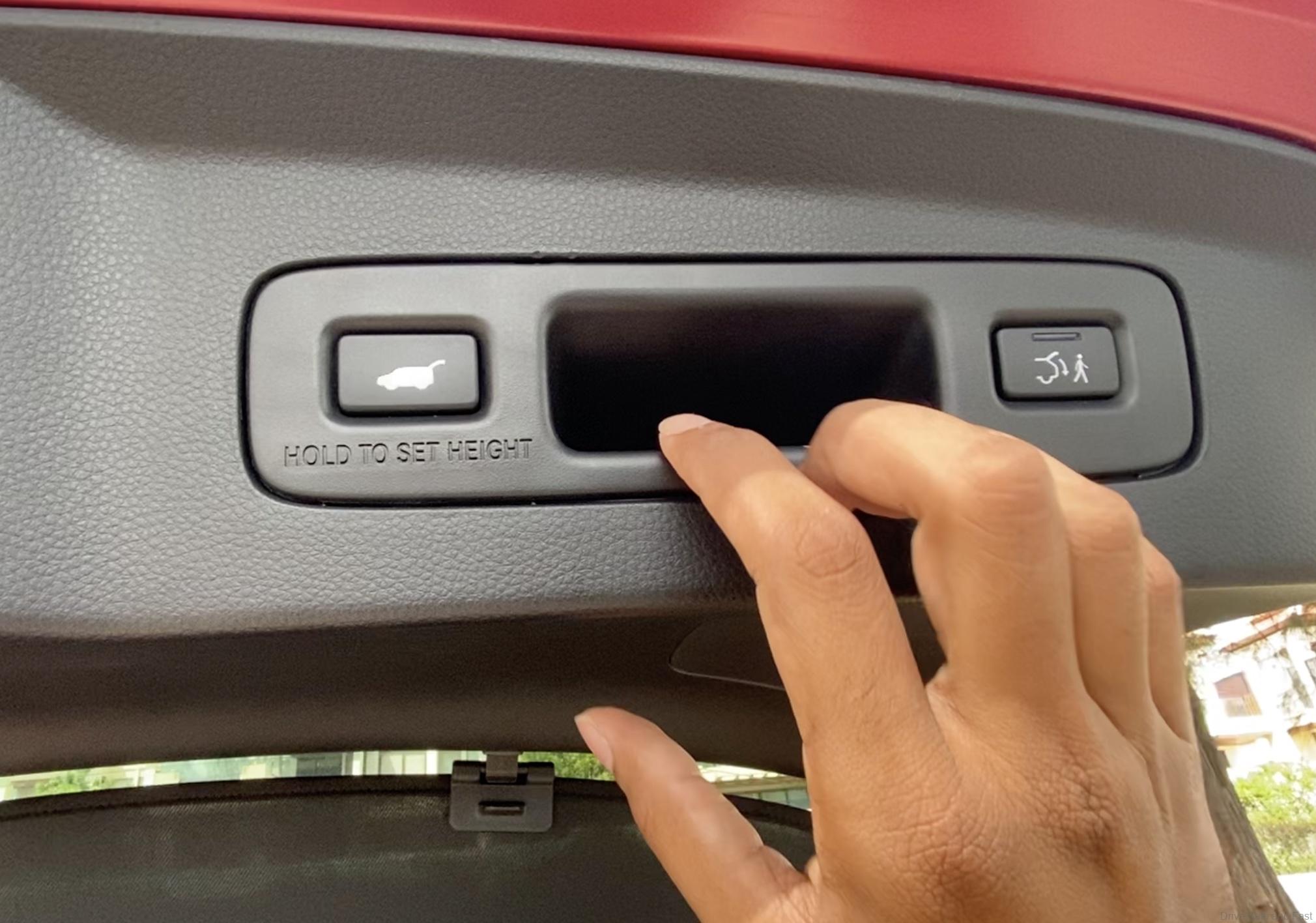
A first for the HR-V is a powered tailgate. This can be operated from the cabin, from the tailgate itself or on the keyfob. What’s interesting here is the tonneau cover is integrated directly to the tailgate on its own little 4-hinged assembly. It’s a simple enough system that never needs to be fiddled with unless very large items are being moved. In which case, the cover is easily detachable and placed on the boot floor or folded away some place as. This e:HEV variant has a hidden storage compartment under one half of the boot floor. The other half, containing the IPU is sealed shut, unlike in the City models. A Honda innovation here is the ‘walk away auto shut’ function, which needs to be activated on the tailgate. After tapping the button to activate it, simply walk away from the boot with the key in your pocket and the HR-V’s tailgate will automatically close itself and the car will lock itself right after. It’s a natural extension to the ‘walk away auto lock’ function. We’ll have to see if it catches on.
Cabin Functionality and Design
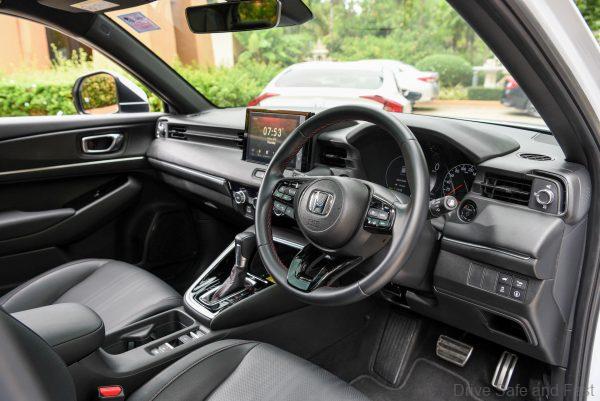
The cabin and dashboard is quite interesting. there’s an air cond strip element that spans the length of the dash. A bit like the Civic but without the hexagonal grille shape. Instead, the HR-V’s party trick is that the outer air vents can be set to ‘diffuse’ air through little slits in the side. This is particularly handy as passengers that push the air vents away from their face can inadvertently obscure the side mirror on their side with condensate. Special attention has been paid to the little things, such as moving the side mirrors back a little for better visibility around the A-pillars and to tucking the wiper blades away when not in use.
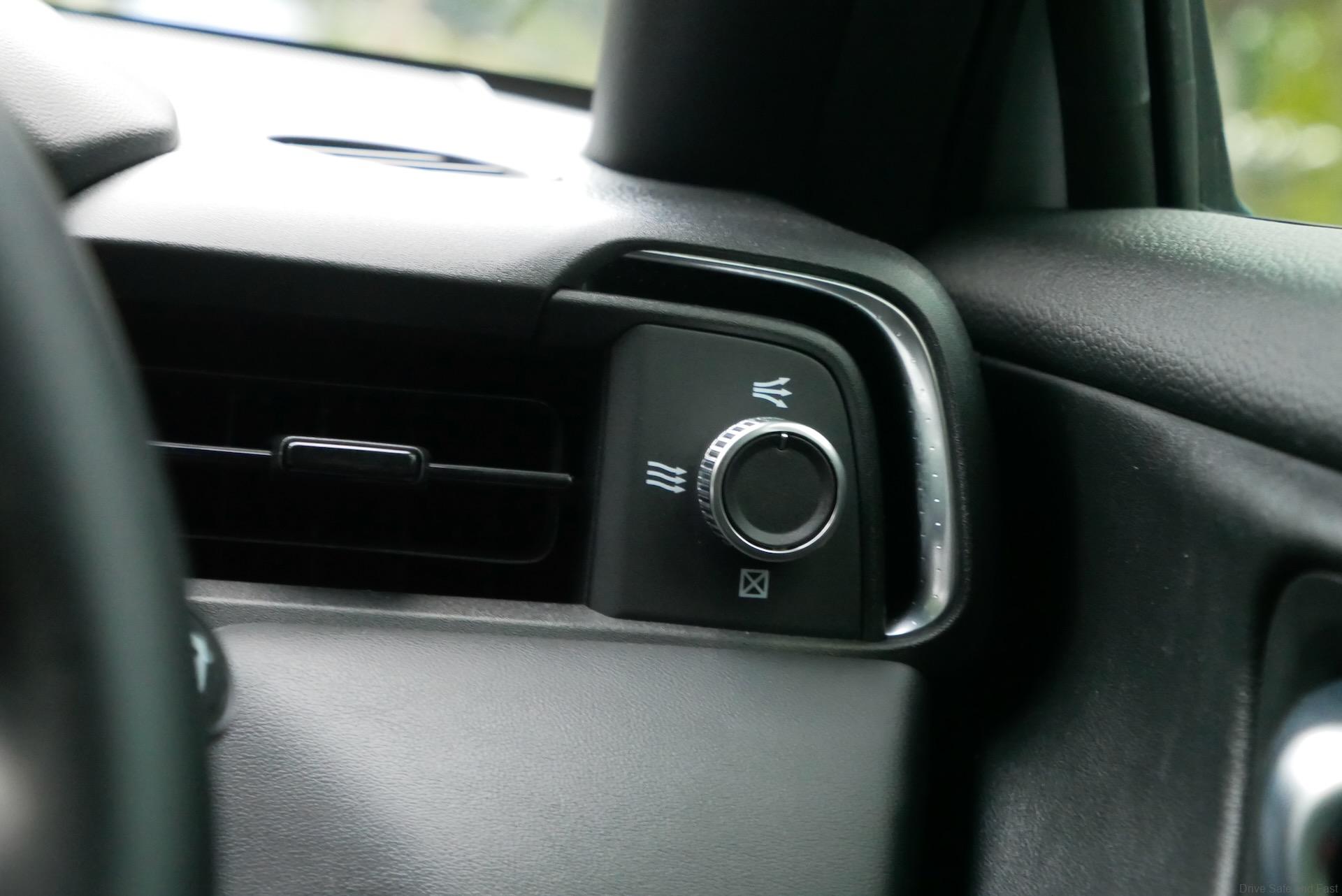
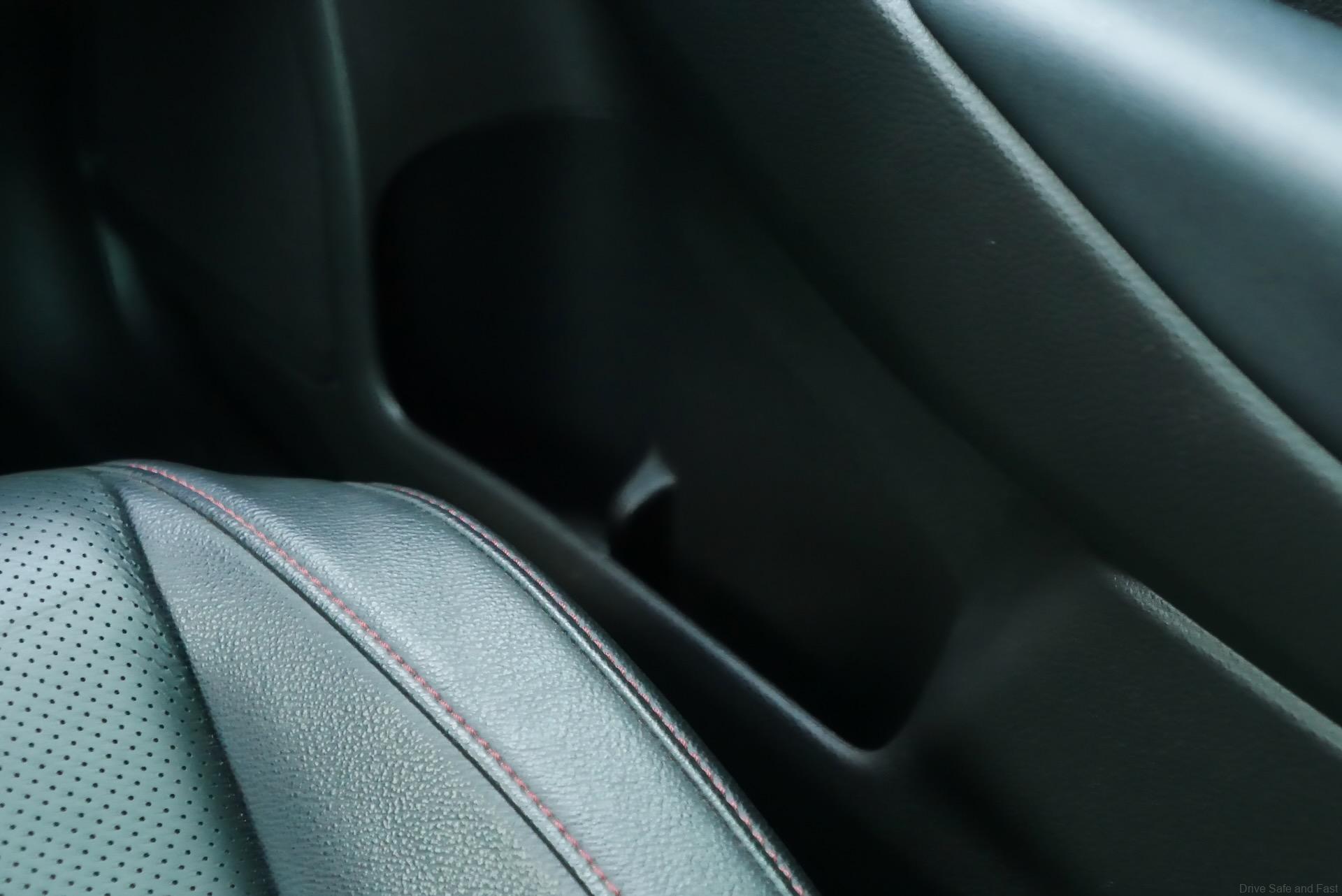
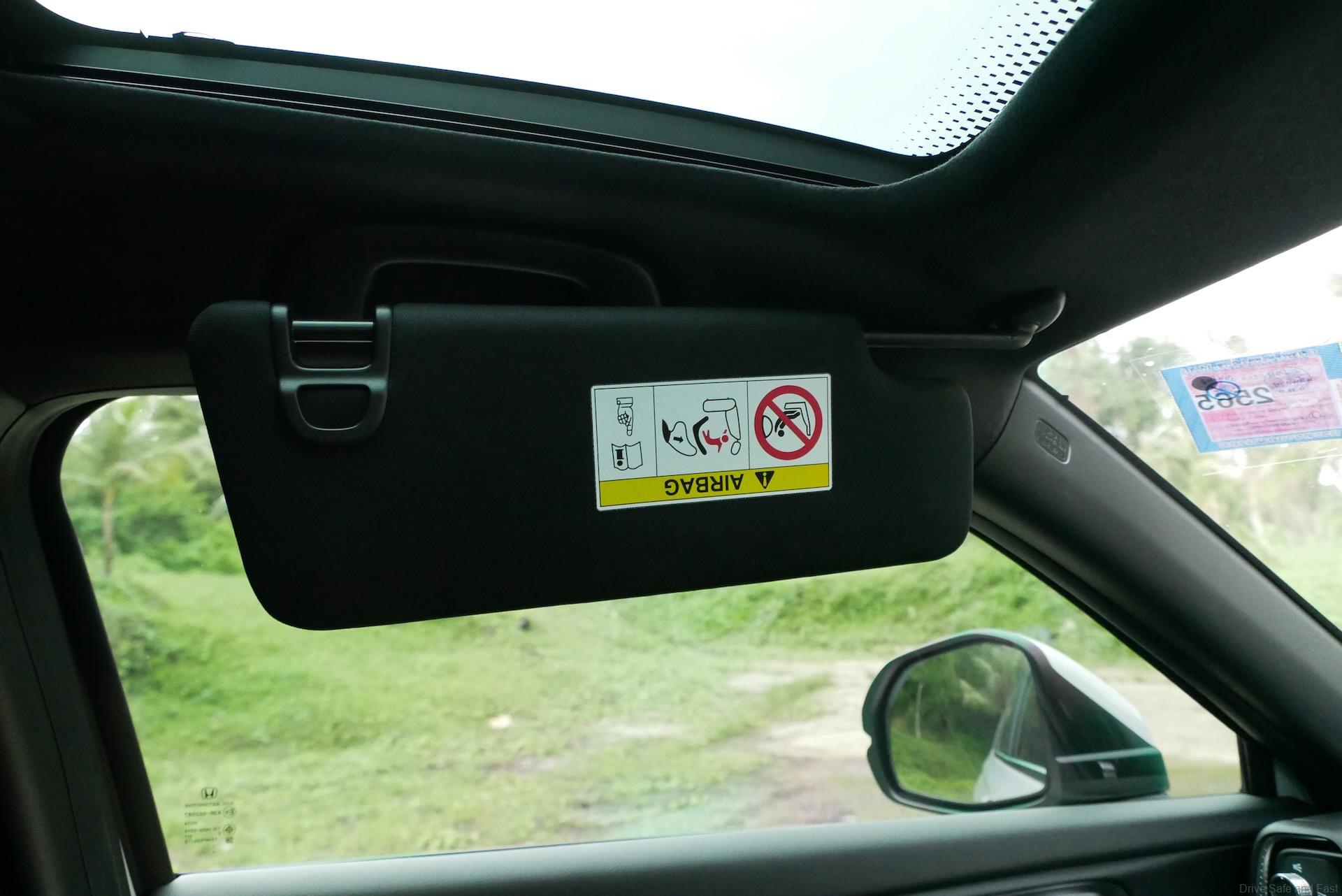
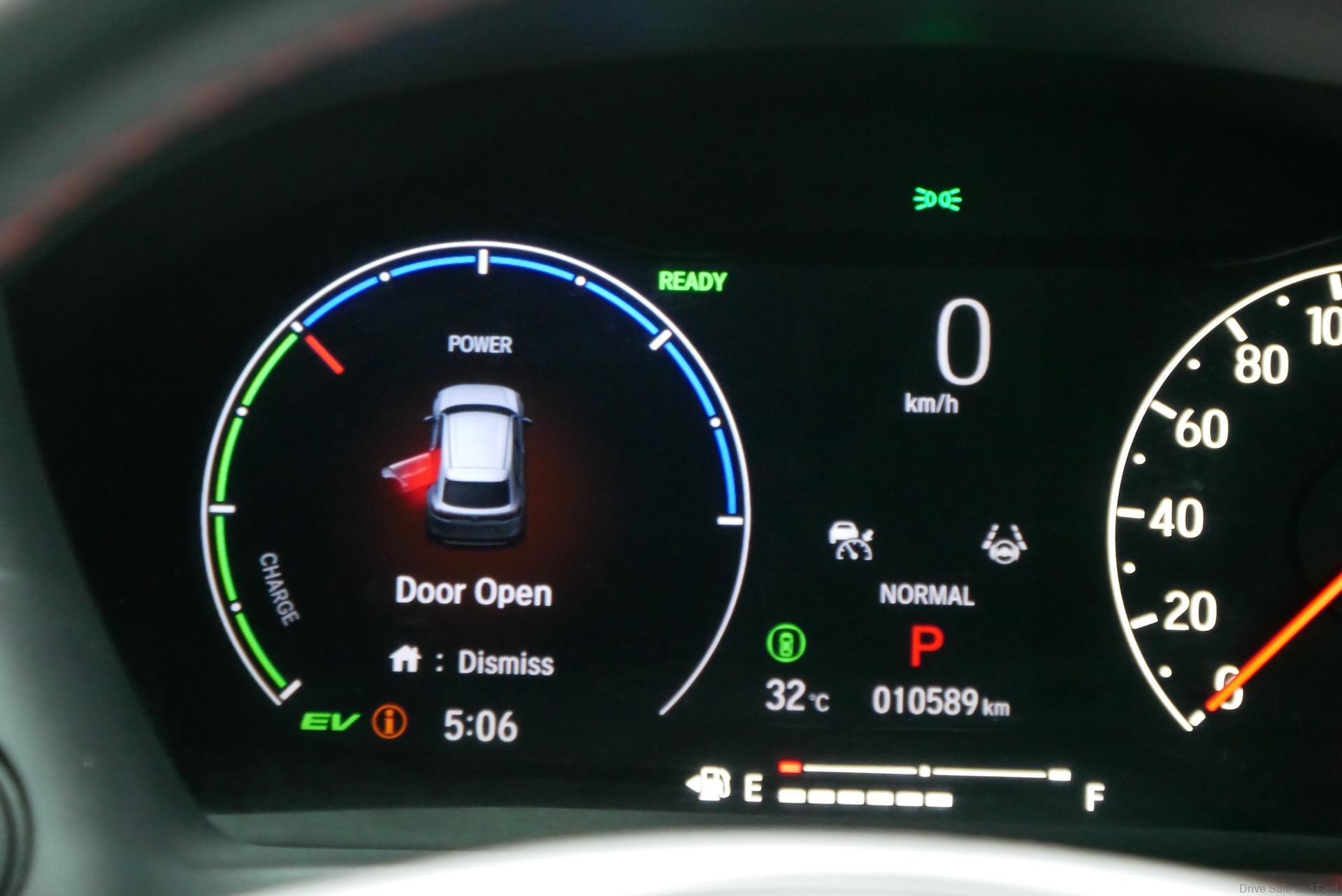
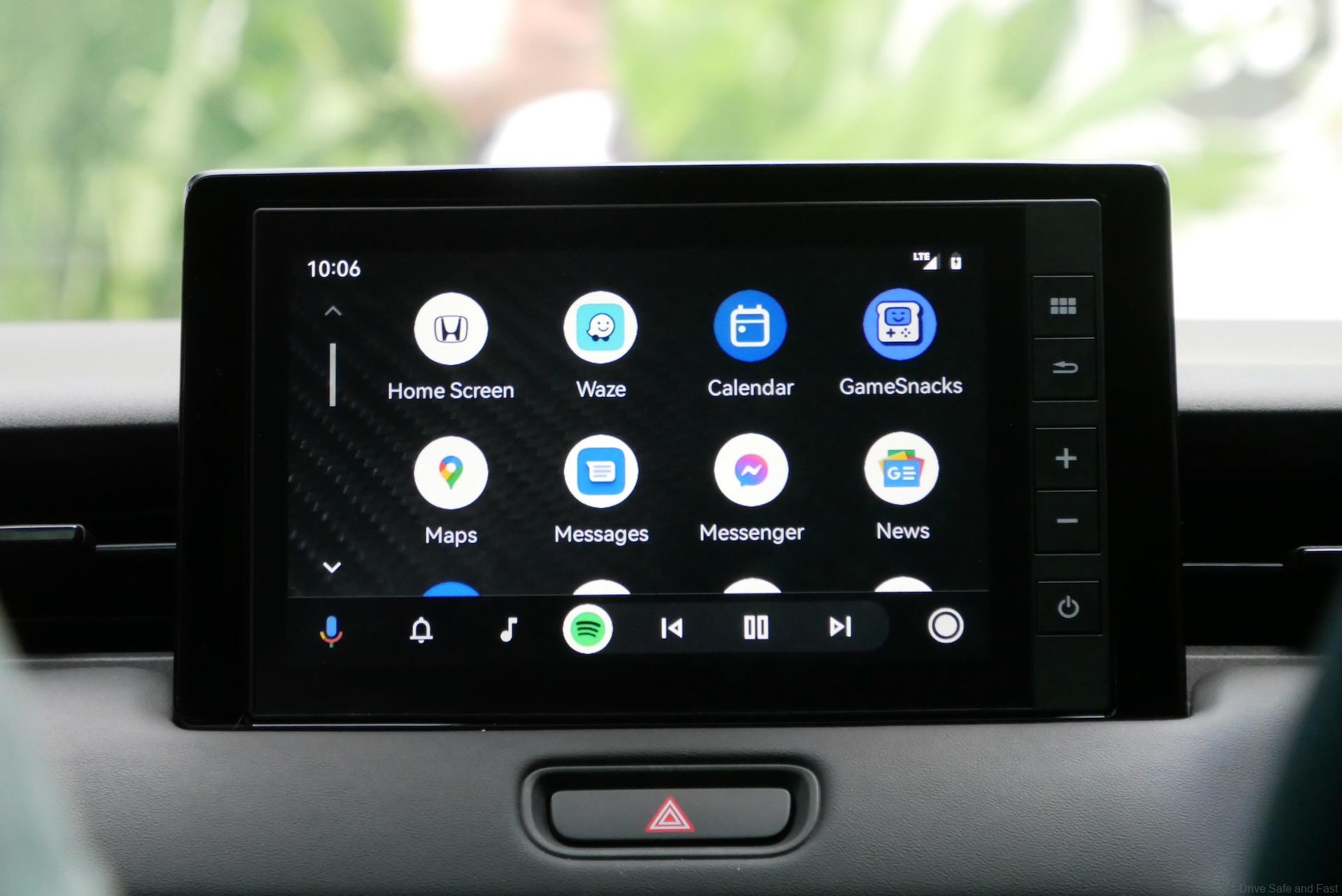
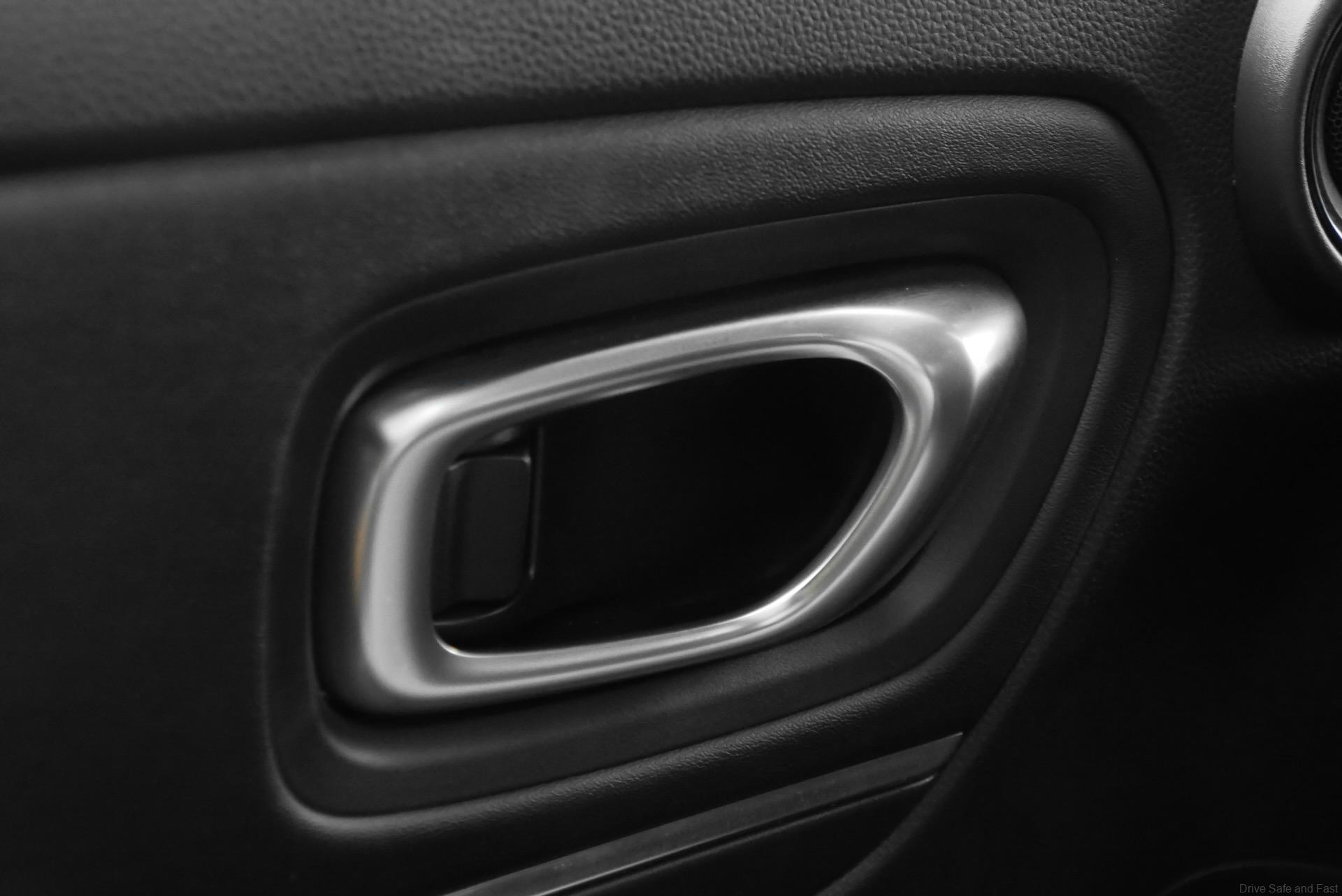
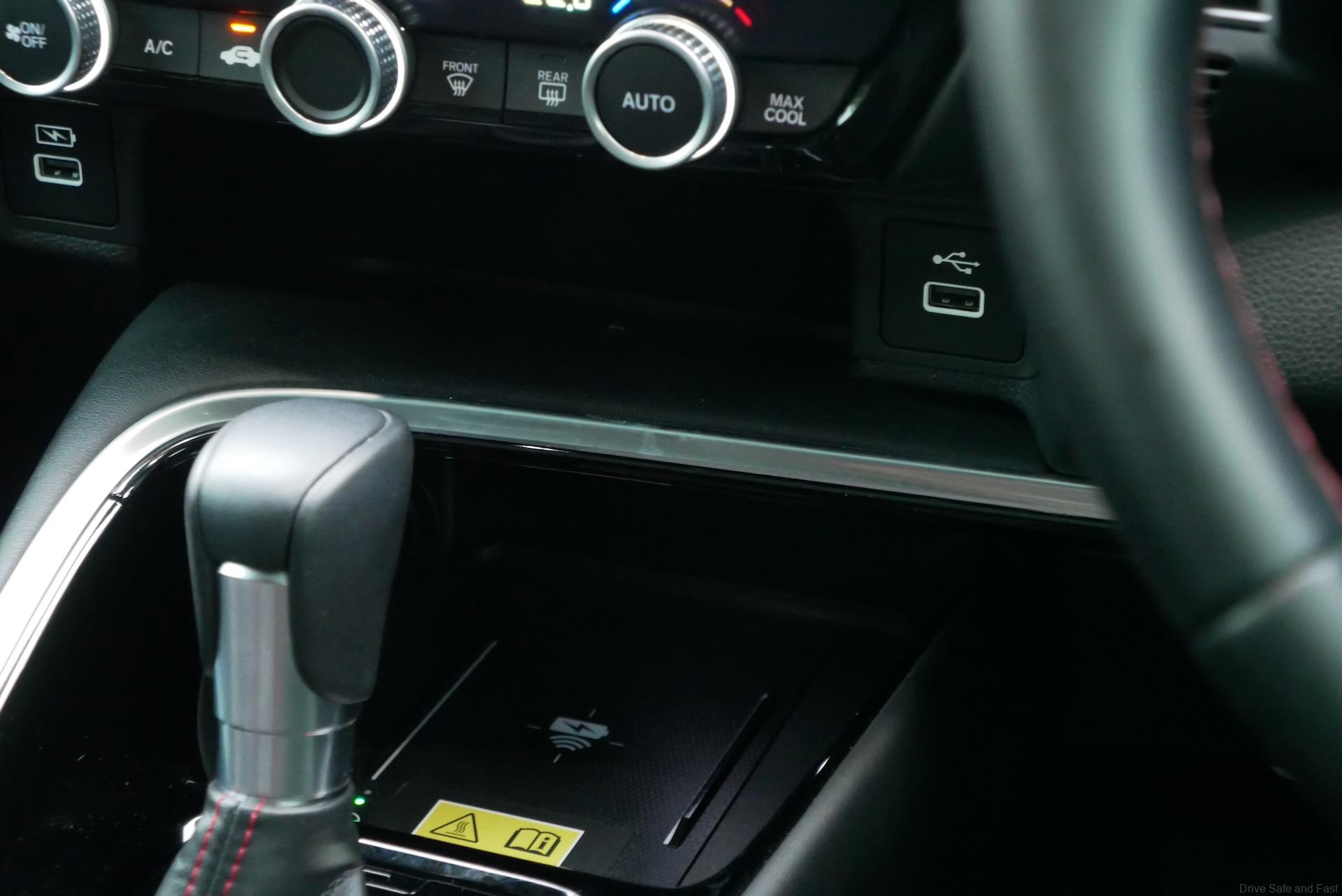
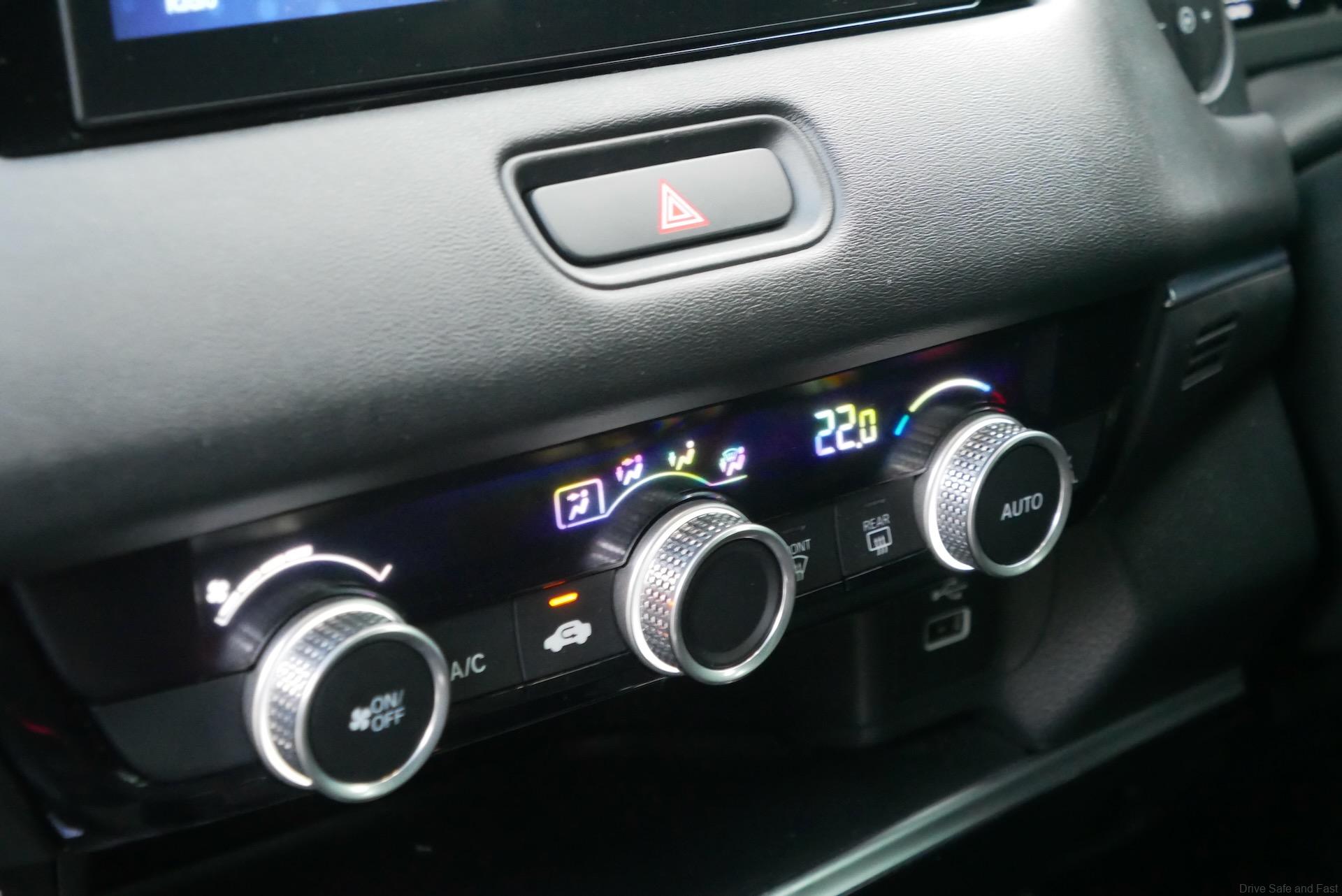
Honda has swapped out the capacitive climate control system for the same tactile knobs that are found in the current gen City and we like this move. We would have preferred a reintroduction of a volume knob, but these are at least present as physical buttons. The driver gets one analogue dial for the speedo and one 7″ digital meter for various, customisable displays. The 8″ infotainment here has Apple CarPlay and Android Auto functionality and there are 8 speaker in total. What’s more, the Thai spec comes with a Qi Wireless charger in a convenient location. The only unfortunate part is that the screen here isn’t floating.
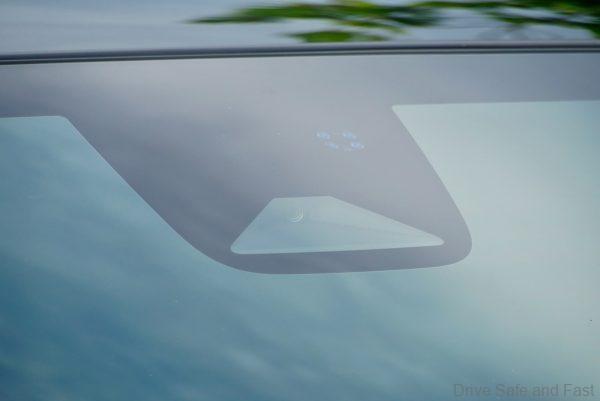
Finally, there’s Honda Sensing. In the HR-V, its features are:
- Collision Mitigation Braking System
- Lane Keeping Assist System
- Road Departure Mitigation System with Lane Departure Warning
- Auto High Beam
- Adaptive Cruise Control WITH Low Speed Follow
- Lead Car Departure Notification System
A final thing to note is the absence of blind spot monitoring. Honda has opted to include LaneWatch instead. This is a matter of preference. Some drivers prefer the visual aid of LaneWatch over the constant buzzing of a blind spot monitoring system.
The new HR-V debuts in Malaysia in Q3 2022. It is now open for booking.

















